Preamble
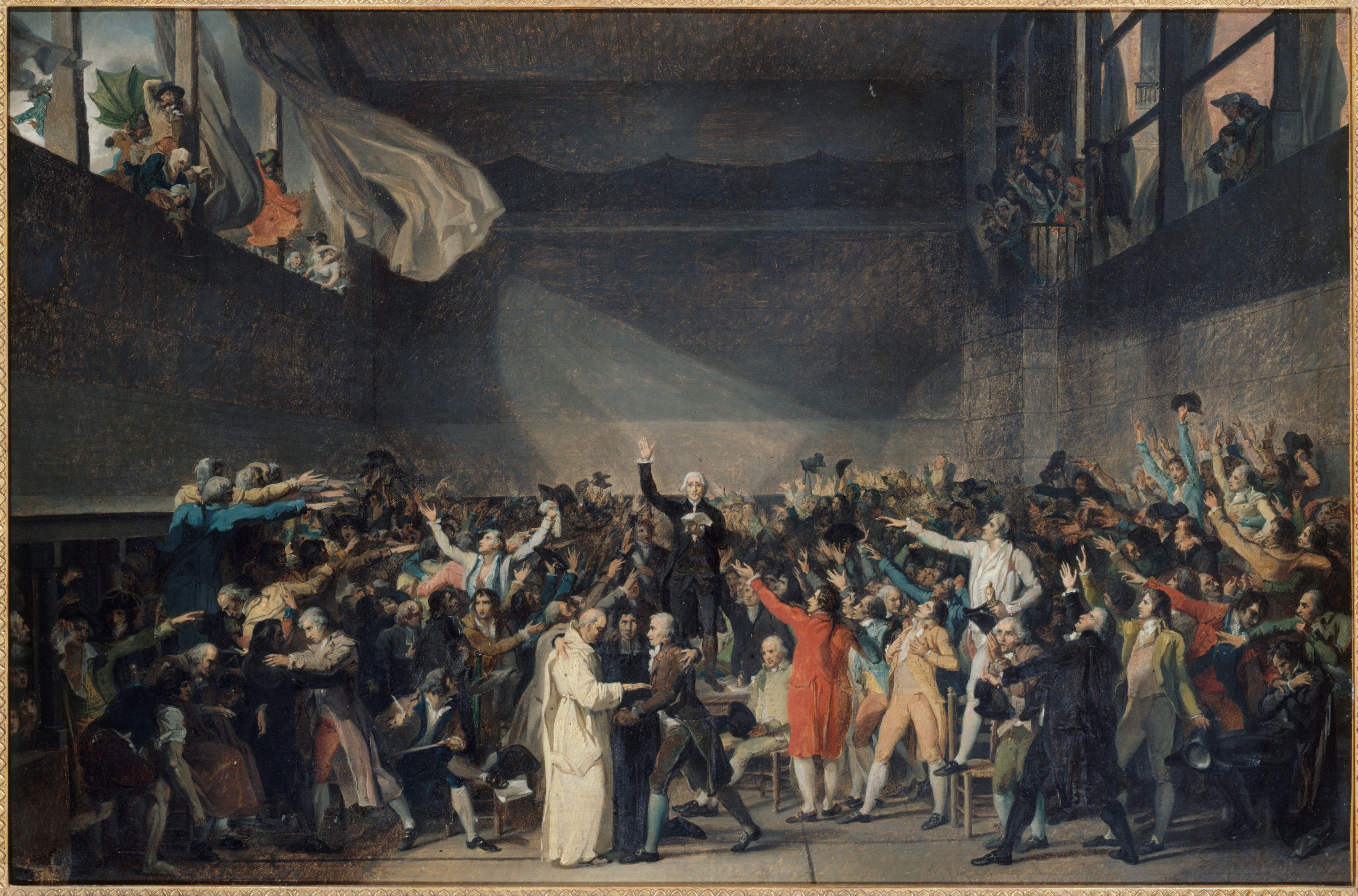
Monsieur Martin-Dausch (in the painting above, arms crossed, lower right hand corner) does not trust the plan.

What we think of today as the Nazi salute, or fascist salute, was introduced, or reintroduced, into the modern world not by the Nazis nor Italian Fascists, and no, not by the Americans either, though they to used to salute the flag that way (the Bellamy Salute), no, it was introduced by a painter and adopted by the French revolution. Yes, the irony really is just that delightful; the so called Nazi salute was popularized by the Mother-Revolution of modern-era leftwing revolutions. The revolution where the very terms left and rightwing come from to begin with.
Even the famous photograph of shipyard workers doing the Nazi salute while a lone man refuses with arms crossed, is itself an echo of a painted scene from the French Revolution. In the oil study above you can see a man seated, arms crossed, Joseph Martin-Dauch, the lone man from the Estates General to dissent during the Tennis Court Oath.
Martin-Dauch was right to have reservations about his revolutionary colleagues and their plan - they were not thinking straight. But at least the revolution was better than the Monarchy! right? . . . mmmhh, no, not even that.
French King Louis the XVI, was I think, a conscientious, somewhat bumbling man, who did the best he could for his people and country in a tough situation (failed crops, and concurrent famine and social upheaval), and well . . . his best didn’t cut it. But Louis the XVI was certainly better than the Terror. (And you can’t wriggle out of this by saying, well, the Terror was just the price of liberty - that argument doesn’t work, because the revolution failed and led to Emperor Napoleon. If the best you can get is Napoleon in place of Louis the XVI, well that’s not worth a nickel, let alone the actual high cost of the revolution in blood and treasure.)
Louis the XVI tried to govern under enlightenment principals. The modern historian Simon Schama, in his book Citizens, paints a convincing (to me anyways) picture of France during Louis the XVI’s reign as a dynamic country full of scientific invention, revolutionary ideas, increased religious tolerance, the abolition of torture, increasing social mobility, where the King himself was enthusiastic about, and bestowed royal funds on such things as groundbreaking schools for teaching the blind and the deaf.
France was certainly no utopia, and had plenty of injustice, high taxes, and famines during major crop failures of course, but the point is it was moving in the right direction, and the Revolutionary Terror wasn’t an improvement. The revolution gave way to Napoleon, and Emperor Napoleon, sacrificing great numbers of Frenchmen on the killing fields of the European chess board, on behalf of the game Napoleon was playing, certainly wasn’t an improvement either.
So think about that; the first great Leftwing revolution, where the the term Left (politically) was coined to begin with, failed the people it was supposed to help, didn’t do better than what it just overthrew, and set the stage for Napoleon.
The Plan, didn’t work, and the warning signs were there from the beginning. But woe betide anyone who tried to point out that the revolution was on a collision course with reality!
The Left has kept failing in much the same way ever since.
They know where they want to go - roughly greater freedom, peace, and prosperity for all. Good, laudable. They have a plan.
They have a vague map, with a considerable amount of information missing. They plot a course on the map anyway, and then stick to it, even when new information comes to light. People discover new obstacles not originally on the map; there’s a deep chasm between themselves and their destination, they must change course and find another way round. But don’t point that out or you’re a counter revolutionary, or a reactionary, or sowing dissent, or whatever, you need to be shouted down, so we can get back down to the business of following the plan.
In the oil sketch heading this essay three figures embrace in the center, two Catholic clergy and a Protestant, symbolizing the religious tolerance, and everyone getting along, attitude of the revolution. But that didn’t happen. The revolution was itself a belief system and it eventually subjugated the competing belief system. The revolution nationalized the Catholic Church, looted it as a source of easy funds, sent many priests who protested to the guillotine, and carried out a de-Christianization campaign.
Amusingly, Jacques-Louis David never went on to do the full sized painting of that oil sketch above, in part, because by the time he would have got round to it, too many of the former revolutionary heroes in the painting had already become personas non grata, for such things as not swearing allegiance to the constitution, and being moderates.
But this essay isn’t about the French Revolution, so we’ll be moving on. All I wanted to do actually was share Jacques-Louis David’s oil sketch as a perfect illustration for this piece, but then I thought I would give some background on it, and then I decided to just go ahead and use it as an opportunity to ground this essay in some historical perspective. However, before we move on let’s answer: what got the French revolutionaries doing the “Nazi salute” thing to begin with? Well let’s take a look at this painting, Oath of the Horatii. also by Jacques-Louis David:

Short version of what’s going on in that painting. The three Roman Horatii-family brothers are about to go fight as champions representing Rome, against three champions representing Alba Longa, to settle a dispute. Their father holds their swords for the oath. Their sister Camilla is unhappy not just because her brothers are heading out for a battle to the death, but because she is betrothed to one of the Alba Longa champions whom they’ll be fighting, so she’ll lose a loved one no matter what. The lone survivor of the fight, one of the Horatii brothers, comes back to find his sister weeping over the loss of her fiance - one of the Alba Longa champions he killed. Furious at his sister for weeping over the enemy, he kills her. Dubious morality there that that is, the painting moved the French Revolutionaries, and the dramatic salute shown in the painting became popular.
That leftist/far-right-salute thing certainly isn’t the only iconic hand/arm gesture to have been introduced or reintroduced into popular culture by a painting. Nothing less than the iconic thumbs down gesture has been attributed (I haven’t seen the first hand sources of this for myself hence my cautious wording) to popularization through a painting. Jean-Léon Gérôme’s 1872 painting - Pollice Verso.
There above you see the crowd with thumbs down indicating they want the fallen gladiator killed rather than spared (apparently the painting caused immediate controversy over whether or not the hand sign in Gérôme’s painting was historically accurate).
Ah, yes . . . that’s right, this essay isn’t about paintings or hand signs either, is it? Well then, the museum detour is over (you didn’t have to remind me, with your little, “cough coughs,” and “ahems”), and off to the main subject matter, we go — that being Q-Anarchism:
I’m going to share some graphics. Some are surveys. Surveys have their limits of course - these are mostly just interesting for corroborating what we have already seen and felt around us in our society.
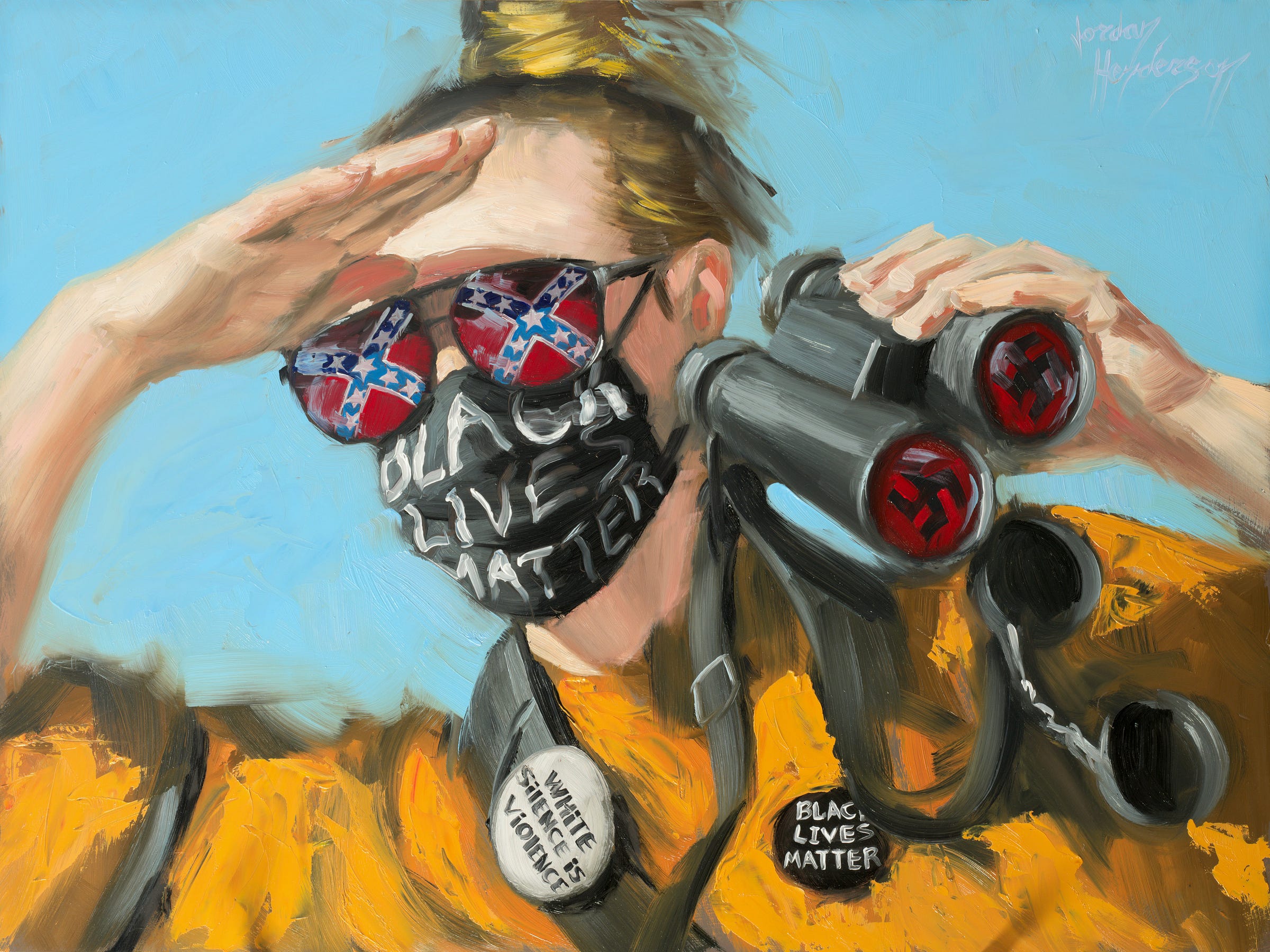



Yes, correlation does not prove causation, and not just immigration but also off-shoring is a means by which capital undercuts labor, yet . . . the similar profiles of those two graphs above should certainly give us reason to pause and reflect.

Table of Contents
“WTF?!” you think. “We did that ramble through the paintings, looked at all those graphics, and only now we reach the table of contents?!” Calm down, I can explain:
Firstly, if you think this essay is too long, I wrote a little section just for you titled, Note on the Length of This Essay, where I play a violin in empathy for any Diva McComplainers who are unhappy that I didn’t compress this material into a tweet.
Secondly, I called the first part a preamble, didn’t I? And I did that for exactly the reason you cynically suspect I did. I thought “Preamble? That words got ‘amble’ in it. So if I call the first part a pre-amble that means we don’t have to get right to the point, we can wander around and look at paintings first. Ha ha ha!” Now, no more lollygagging - back to the table of contents.
Preamble - (you already read that part, see, we’re making good time.)
Postscript - Sharing a reader’s insight given as a comment to my last essay
Introduction:
A few weeks back I published an essay titled, On the Great Replacement, I’ve Come Around: Here is Why. The title is self explanatory. If it sounds interesting to you, read it, as ultimately this post is a defense of that post. What you are in the midst of is a debate, and an interesting one.
Here I am to going to propose that those who have strongly objected to; my writing, Simon Elmer’s writing, and to Nevermore for publishing our work on replacementism, sense at some level, what I know — the hoped for diverse coalition of the various groups making up the 99%, or proletariat, is largely an illusion, and a simple stress test of a mild sort will prove it. They want to avoid the stress test for the same reason I want to apply it. We both suspect the same result if the coalition is subjected to a mild stress test — it will vanish because it was a mirage all along.
Firstly though, I will engage with the published critique of my essay from Rusere Shoniwa (after that I’ll describe the mirage chasing, ‘trust the plan,’ belief, that I dub Q-Anarchism).
Note on the Length of This Essay:
Whenever I publish something short and sweet my critics tell me, “Not enough context!” then if I reply with a considerably more detailed piece and more context they tell me TL;DR (Too Long; Didn’t Read). I’ve had exactly that happen to me before.
I’m not saying my new critics would do that, but just in case; let’s not have that happen here. Multiple people faulted my short sweet 6,000 word previous piece for not providing enough context for the dozen topics that I briefly touched on.
Had I called my earlier piece “J. Henderson’s Encyclopedia: The Authoritative Compendium of Scholarly Treatises on White Guilt, Mass Migration, and Multiculturalism” then the charge of not enough context and not enough in-depth detailed study would be valid. But it isn’t valid because my previous piece was a humble and self critical personal account of what changed my viewpoint. I specifically described it as a whirlwind tour, and for those who wanted more detail beyond the brief examples I offered, I cited other articles and very in-depth studies that influenced me such as Rodney Stark’s book For the Glory of God: How Monotheism Led to Reformations, Science, Witch-Hunts, and the End of Slavery.
However, I appreciate that Shoniwa has taken the time to engage with my previous work at length, and I will respond in kind. More context and explanation does, though, mean more length and detail. To quote an ancient Chinese proverb - deal with it.
Rusere Shoniwa’s Critique of My Essay
Recently Rusere Shoniwa, who publishes Plague on Both Houses, and contributes to the publication Real Left, published a four part critique of my essay. Shoniwa’s four part series is titled The Great Replacement Consciousness Test, and the four parts are:
Part I - Some of My Best Friends Are . . .
Part II - Positive Stereotyping, Interracial Crime, and the You-Know-Who’s
Part III - Religion and Diversity.
Part IV - The Heart of the Matter
Those four parts above are hyper linked and will take you to Shoniwa’s critique of my essay.
Shoniwa takes issue with what I wrote for a multitude of reasons, and offers counter rebuttals to some of the arguments that I laid out.
The arguments put forth by Shoniwa vary from reasonably concrete arguments all the way to numerous misrepresentations of my essay, and gratuitous misrepresentations of me. (As one example of many: he editorializes when quoting me, by claiming that I “scream” the sentence he quotes of mine. My sentence that he quoted contained neither an exclamation mark, nor all caps - no indication that “he (me) screams” the sentence. I typed it sitting quietly at my keyboard. That’s the kind of gratuitous misrepresentation of me found throughout Shoniwa’s critique. It wasn’t courteous of my critic, and it isn’t conducive to reasoned debate.)
Many of Shoniwa’s arguments appear like counters to my argument, yet when I parse them he seems to have just reaffirmed what I said. For example: I pointed to the self hatred of the West, which I wish to help undo. Shoniwa incensed, points out that the West is to blame for destroying itself. Yes, and?
Many of Shoniwa’s arguments in his critique of my essay are along these lines, in which his tone implies that he is strongly disagreeing with me, but when I parse his counter argument I can’t find what it is that I stated that he is contesting. He paraphrases me a lot, too, and much of his paraphrasing doesn’t line up with what I actually said.
So my counter critique will focus on what I consider to be Shoniwa’s most cleanly laid out arguments - most of the misrepresentations, including of me personally, I will simply leave unaddressed to avoid cluttering this essay, and to stay focused on Shoniwa’s stronger arguments.
Note on the State of The Truth Movement Migration Feud:
Let me take a moment to bring you up to date on this dispute around immigration that has been lighting up some sections of what has come to be loosely known as the Truth movement:
Shoniwa’s four part critique of my essay was published on his site Plague on Both Houses and also published on Real Left. The publication The Stirrer weighed in, in favor of Shoniwa’s critique and contra Nevermore for having published excerpts from Simon Elmer’s work, and my work, and then they weighed in again here. A roughly similar dispute emerged earlier between Simon Elmer and the publication Off-Guardian, and another similar dispute between writers C. J Hopkins and Eugyppius on Substack. Nowick Grey’s take here, Paul Cudenec’s take here, Iain Davis take here. All on roughly this same topic.
Everyone I just mentioned was an opponent of Covid-19, varying between regarding it as a totalitarian overreaction, all the way to regarding it as a total psyop and fake pandemic (my view).
Some have despaired at another fracturing of the Truth movement, but don’t. Rigorous debate is good, this is fine. Sure there has been some excommunication, and vociferous denunciation of wrongthink going on, but that’s just extra spice.
Note on the title of this essay:
Shoniwa prefers the term Volutaryist instead of the closely related term Anarchist — a sensible choice. I nonetheless titled this Q-Anarchism because that’s closer to Q-Anon, and therefore catchier. Besides, the position I’m critiquing is held primarily by anti-fascist, anarchist, former anarchist and anarchist adjacent publications and people.
Religion & Diversity
Religious Differences Don’t Matter?
The clearest and most concrete of Shoniwa’s arguments in my view is in the third part of his series: Part III - Religion and Diversity.
In my essay, that Shoniwa is criticizing, I have a subsection under the subheading Religious Differences Matter. There I explained that when people take their religions seriously, religious differences do matter, and they can and do affect the world in major ways.
Shoniwa boldly states that “No, religious differences do not matter.”
Shoniwa regards my approach of looking at what a religion teaches, and looking at the example set by a religion’s founder, as risible and trite. His preferred approach is to examine the behavioral outcomes.
Very well then, let’s see how Shoniwa does that.
Shoniwa begins by attributing the world’s current state of affairs to the “accumulation of centuries of the Christian West’s will to power,” he only mentions negative aspects of the current state of affairs (presumably to counter what he views as an overly positive assessment of the West on my part). And then he says this (emphasis mine):
“Now, I am not trying to argue that Muslim culture is better than Western culture. I really do like living in London and would not trade it for Islamabad or Riyad. As weird as this may sound to Henderson, I am now, for all intents and purposes, a Westerner, but I have a perspective that allows me to be a little more critical. To reiterate my position on culture – if you want to present any culture as a Good Thing, you must put both its horrors and its beauty on the scales and prove a net positive. That is an exercise in futility, but if you’re going to try it, I would suggest that Henderson’s less-than-rigorous approach is risible.”
Firstly, when Shoniwa states that he wouldn’t trade living in London for Islamabad or Riyadh he appears to be stating a preference for one culture over another, and acknowledges that at least one of the cultures is shaped by a religion.
Religions are cults, and serious cults cultivate the social order and form cultures. Shoniwa understands that, because this is still the section where he is discussing religion, but he has switched to the broader term culture, and appears to be using the two terms interchangeably. This indicates that Shoniwa recognizes that religion belongs in that category (that category being belief systems that cultivate the social order — culture).
So while Shoniwa may be unwilling to attach any value judgement to different religions, his stated preference is for a city steeped for much of its past in the cult of Christianity, and he wouldn’t trade this for Islamabad or Riyadh - cities whose cultures are still steeped and shaped by the cult of Islam.
(I’m using cult here, in a non-pejorative manner. I know it’s jarring, but it helps to remind one of the connection between cults, cultivation and culture — The root Latin ancestor of these three words is apparently ‘colere.’ I don’t know any Latin but the fun part is that the inter relatedness of the three words is clear in the modern English).
Secondly, despite Shoniwa finding my method of evaluating religions risible and trite, the only method he offers that I can find in his essay is what he mentions in my quotation of him above about weighing the horrors and beauty of a culture on the scales. Of this method, that he proposes, he says that it is “an exercise in futility.”
Shoniwa does not like my method, and the only method he offers he calls an exercise in futility, so it appears that Shoniwa does not have a method for evaluating the significance of religious differences.
How then is Shoniwa so confident as to boldly state, “No, religious differences do not matter.”?
Simple, he advocates that everyone adopt his belief system (voluntaryism) in public and keep their own belief systems in private and out of the public sphere. I’ll quote Shoniwa at length.
“Religious differences don’t matter if you’re a voluntaryist in spirit, not name. That’s the starting point. A voluntaryist world is one in which everyone gets to choose their spiritual or religious belief system on the understanding that they can’t enforce that system on others in any way.
Thus the public square becomes a neutral place in which we interact on the bread-and-butter things required to live – work, trade, and so on. We can even engage in entertainment and exchange of ideas in the public square as long as everyone understands that those exchanges are not an imposition of ideas on anyone. If the ideas or entertainment offend your religious principles, you make a free choice not to attend those exchanges.
Then there is religion which operates in the private sphere, and it does not matter, because the public square is unaffected. That is the ethos behind separation of Church and State. We interact in the public square on principles governed by universal principles of Natural Law which can be respected by all faiths, and we follow our separate faiths in the private sphere.”
The separation of Church and State is nothing more then the triumph of one belief system over another (secularism over Christianity). Christianity was historically very interested in the public square, as are Islam, Judaism, and Hinduism too of course.
In an essay I wrote a few years back titled Science! Blessed be Thy Name: The Vanishing Value of Religious Freedom I went into some detail on how the secular belief systems can be every bit as oppressive and intolerant as the religious belief systems that they displaced. The Science, democracy, and patriotism (in the modern context civic nationalism), are secular belief systems. The Followers of The Science for example, practice as part of their belief system the ritual of vaccination, but they also believe that nearly everyone must practice this rite in order for it to work, so they attempt to impose the ritual that they believe in (vaccination) on non believers.
Secularists, whether peaceful voluntaryists like Shoniwa, or the not so peaceful Followers of The Science, are like the proverbial fish that doesn’t recognize water; they are so immersed in secularism that they have come to assume that even religious people think about religion the way they do, and agree that religions should be relegated to the private sphere.
Secularists tend to view the imposition of a religious belief system as anathema, but are not as alarmed at the imposition of a secular belief system, because they don’t recognize that they are both belief systems. To show secular fish the existence of water, try my essay Science! Blessed be Thy Name: The Vanishing Value of Religious Freedom. Here’s one of my paintings that I used as an illustration for the aforementioned essay.

And while were at it, a couple more Covid era science paintings:


That might have looked like I just shamelessly slipped in three of my paintings, but to be fair it was almost on topic. Now, where were we before we wandered off into the gallery? That’s right, religious differences.
Examples of Religion Shaping the Public Square.
The Hindu caste system was most certainly not confined to the private sphere; on the contrary, it shaped whole societies over thousands of years.
Christianity was so integral to the social order in Europe in both public and private, that before Christianity was displaced by competing belief systems and internally fractured, European nations made up what is known as Christendom.
In Islamic nations Islam historically exerted considerable control over not just the Muslim population but the non-Muslim population too, through the system of dhimmitude. The fabled multicultural paradise of al-Andalus (Spain under Islam), is a myth.
“By any objective standards, then, and in spite of its undeniable artistic, literary, and scientific accomplishments, and of modern wishful “let-us-all-get-along” thinking that tries to gloss over evidence to the contrary, Islamic Spain was not a model of multicultural harmony. Andalusia was beset by religious, political, and racial conflicts controlled in the best of times only by the application of tyrannical force. Its achievements are inseparable from its turmoil.”
- Darío Fernández-Morera author of the The Myth of the Andalusian Paradise: Muslims, Christians, and Jews under Islamic Rule in Medieval Spain
Christians in their turn expelled or forcefully converted Muslims and Jews after the reconquest of Spain.
And while they never outright conquered Spain for themselves, we have good reasons to believe that the Jews, if they had outright conquered Spain, wouldn’t have done any better than the Muslims or Christians at trying to maintain peace between the three belief systems. Even at the time in Spain the Jewish community were persecuting each other over differences in their belief system. As - Darío Fernández-Morera points out:
“In Granada, rabbi and visir Ibn Naghrela “The Prince” boasted that “[Andalusian] Jews were free of heresy, except for a few towns near Christian kingdoms, where there is suspicion that some heretics live in secret. Our predecessors have flogged a part of those who deserved to be flogged, and they have died from flogging.” In Catholic lands in the eleventh century, Orthodox Jews persecuted the then thriving Karaite Jewish community, which rejected the authority of the Talmud, and expelled it.”
Hindus and Muslim in India haven’t been on the best of terms:

As Indians themselves immigrate into other countries, they’re bringing their religious conflicts with them. Canada has now been enriched with multicultural Hindu/Sikh conflict.
The conflicts come just weeks after RCMP announced they had evidence of Indian officials’ involvement in homicides, extortion and other violent crimes on Canadian soil, which led to Canada expelling six Indian diplomats, and India expelling six Canadian diplomats in retaliation. Prime Minister Justin Trudeau’s government has repeatedly accused Indian Prime Minister Narendra Modi’s representatives of engaging in covert campaigns to repress and kill Sikh activists living in Canada, including gunning down Hardeep Singh Nijjar in Surrey, B.C., last year.
It all boiled over this week in multiple Canadian communities, where out-of-control demonstrations by nationalist Hindus and Sikhs led to condemnation from politicians and forced municipal leaders to contemplate new bylaws that would ban protests at places of worship. In Surrey, three men were also arrested after violence broke out when hundreds of demonstrators showed up at a Hindu temple.
Fears of more clashes between Sikhs and Hindus in Brampton, Ont., as Canada-India rift spills over into suburbs - The Globe and Mail
Further Remarks on Diversity and Religion.
I hardly needed to point out that religious beliefs shape conduct in both the private sphere and in the public sphere because Shoniwa already knows that this is the case. He is not averse to appealing to the teachings of religious figures to try to shape people’s conduct in the public sphere. Shoniwa quoted me:
““What would Jesus do? Is not an alarming thing to hear: What would Muhammad do? is unsettling, and rightly so”, says Henderson.”
And then Shoniwa responded:
“If he (me/Henderson) had asked himself the question: what would Jesus do? Before he bashed away at Islam in this trite way, he might not have engaged in Islam-bashing, which I’m afraid is what he did. The proper Christian thing to do is to love thy neighbour, not tell them their religion is “unsettling”.”
So right there he, says the proper Christian thing to do. Therefore Shoniwa expects Christianity to shape a Christian’s behavior (Shoniwa evidently assumes that I am a Christian - too complicated to get into here) including in the public sphere, such as influencing what one does or doesn’t write for public consumption. He also expected me to take seriously Jesus’ example and align my own public sphere behavior with it. And so I contend that Shoniwa should then understand the significance and ramifications of Muhammad and Jesus having set radically different examples.
We have another enigma to solve here. Shoniwa evidently believes that voluntaryism (a system of beliefs about how best to cultivate the social order) is a better belief system than other cults such as Statism or religious beliefs systems. But how did he come to choose voluntaryism for cultivating the social order over other secular or religious belief systems?
Let’s first take a closer look at what my example was that I used to illustrate the significance of religious differences. I wrote in my essay (my essay that Shoniwa is critiquing):
“Islam and Christianity are both focused on their respective founders who believers regard to have led perfect lives and seek to emulate.
For Christians it is Jesus’s example that one should emulate, for Muslims it is Muhammad's example that one should emulate.
Muhammad and Jesus set very different examples.
Muhammad started wars, founded an empire, enslaved captives, ordered non Muslims to convert or die, or pay special taxes and live in a subservient state - Dhimmitude, kept a harem, and so forth.
That might surprise you because you have probably heard that well actually Islam is a religion of peace and that the Prophet Muhammad preached peace.
What you don’t hear is, when Muhammad preached peace, and when he didn’t. We must look at the example set by Muhammad: like so many revolutionaries throughout the ages Muhammad preached peace when his movement was vulnerable, militarily weak, and expansion through war wasn’t a viable option. Once his movement was militarily strong, and expansion through conquest was an option, Muhammad preached war.
Before writing off critics of Islam, please at least hear what they have to say. Islam Unveiled by Robert Spencer would be a good place to start.
Yes Christians have committed many crimes but you can always hold them to account with their own standard by pointing out that their behavior is un-Christlike.
What would Jesus do? Is not an alarming thing to hear: What would Muhammad do? is unsettling, and rightly so.”
That section right there is what Shoniwa called alternately risible and trite.
Shoniwa’s approved method for evaluating belief systems he admitted was an exercise in futility; so again, he doesn’t approve of my way of evaluating belief systems and his own way of evaluating them he himself calls an exercise in futility so he doesn’t appear to have any means of evaluating belief systems. Yet here he is promoting voluntaryism.
What gives?
I’ll hazard a guess. I suspect that Shoniwa evaluated voluntaryist beliefs in a very sensible way: by examining the teachings and doctrines of those who developed and promote voluntaryism. Then he would have engaged in a thought experiment about what the effects would be on the social order if voluntaryism were widely accepted and applied.
Shoniwa’s mental model would have been informed by both his life experience and his book learning. He would have seen the potential for a better social order and quite reasonably adopted voluntaryism, including to the point of seeing universal acceptance of voluntaryist-philosophy-as-the-principal-belief-system-for-cultivating-the-social-order (AKA - Not Multiculturalism) as a recipe for social harmony.
If my guess is right, and I’m pretty confident it is (though of course, you be the judge on the probability of my guess, and hopefully Shoniwa will let us know if I’m on the mark), then Shoniwa does in fact have a method for evaluating belief systems, and it is approximately the same method I used for my short and sweet example of the importance of the differences between Christianity and Islam - you know, the risible and trite method.
Jewish Gentile Conflicts of Interest

In my earlier essay I touched on this matter under the subheading Ethnocentrism and Racial Solidarity: Everyone Else’s Not So Secret Weapon, and Shoniwa in his critique of my essay brought it up but then brushed it aside without really addressing it.
This was an important point demonstrating what happens when ethnic solidarity and organizing on behalf of one’s own group is socially acceptable for some, and verboten for others. The consequences are not hard to see. Many major government policies and social taboos line up with organized Jewish interests while conflicting with Gentile interests.
Foreign Policy
The United States has shelled out well over 300 billion dollars in military and economic aid to Israel, and the US acts as a powerful ally of Israel, fighting some of Israel’s enemies for them such as the multi trillion dollar Iraq war, and staging aircraft carriers and shooting down missiles on Israel’s behalf. And there remains the risk of embroiling the USA in another major war on Israel’s behalf depending on how things progress in the Middle East.
This is all very well for Israeli interest groups, but is most definitely not in the interests of the American majority, who would be better served by the USA having a policy of neutrality in the Middle East. Oh, but we need a big military presence in the Middle East - what for? Defending Israel? And conducting multi-trillion dollar wars against Israel’s enemies? If it’s really just about oil, then wouldn’t we have focused on building our alliance with, oh, I don’t know . . . maybe countries that actually have oil, like Iraq and Iran instead of Israel? But those countries hate the USA - Right, because we support Israel against the Arab states to the detriment of the entire region (overthrowing the Iranian government and reinstating an unpopular Shah probably wasn’t the best overture of friendship on our part either).
Freedom of Speech
Criminalizing and/or creating some of the strongest social taboos we have, around free speech in various Gentile countries on behalf of defending perceived Jewish interests such as controlling discussion around the Holocaust, sets a dangerous precedent for free speech. People obviously should be able to investigate any historical matter and come to the conclusion that they feel best fits the evidence, and speak openly of it. Holocaust speech laws may have benefited perceived Jewish interests but are directly detrimental to Gentile interests such as robust protection for free speech. But again, who’s going to prevail? The group for which it is socially unacceptable to organize and advocate on its own behalf? Or the group that can?
Even here in the United States with much more robust protection of free speech than Europe we still have the ADL, and AJC leading the charge, advocating for more censorship online.
Circumcision as a Case example
The worst of the transgender madness might not have been as easy to carry out if there had already been some sort of sensible ban against unnecessarily chopping off healthy tissue from children for ideological purposes, such as a ban against the ritual of circumcision which has plenty of downsides that you can read about here. Even if the risks of a serious mishap are relatively small, why take that risk, and put the child through trauma, for a procedure for which there is no benefit? (Save for people who still believe that HIV causes AIDS)
This makes for an interesting case example.
Iceland tried to ban circumcision, and was faced with outrage and international condemnation including of course from the ADL. Denmark considered banning circumcision too, with some 83% of Danes surveyed supporting the ban. But Jewish and Muslim interest groups didn’t like it.
So who do you think got their way, the white majority that wanted the ban? Or the ethnic and religious minority interest groups? As always, the white majority is expected to subvert its own best judgement and instead defer to minority interests. Of course Iceland and Denmark backed down.
Immigration
A considerable number of Jewish interest groups make no secret about their support for high levels of immigration. They believe that because they sought and were given refuge in the United States, they now have the right, and obligation, to invite the rest of the world too. (Here are some examples: The Rabbinical Assembly, Jewish Center for Justice, Union for Reform Judaism, Hebrew Immigrant Aid Society, Religious Action Center of Reform Judaism, Jewish family and Community Services, and so on, and so forth).
Considering the longstanding historical religious tensions between between Jews and Christians, and that Jews rarely admit that there is another side to the story, and that their behavior wasn’t exactly exemplary either — instead always blaming the Christians for the past conflicts — it makes you wonder if there might be some other motives to these organizations’ pro-immigration stance.
(It takes a lotta chutzpah, to openly admit that your people are always running into trouble with almost everyone else, over thousands of years, and to always blame the other, and not stop and think, “Mmmhh, maybe it’s not just them; maybe we are just as much to blame.” But that would be anti-Semitic to suggest that of course.)
While opinion surveys have shown Jewish American opinion warming up to Christians, as they no doubt come to realize that the white culturally Christian majority is the group they can most easily guilt trip, as early as a decade ago a 2014 polling showed American Jews ranking Evangelical Christians at an average abysmal rating of 34 on a 0 to 100 warmth scale, slightly worse even than what they ranked Muslims, while white Evangelical Christians ranked Jews at an average warmth of 69 on the same scale.
So let’s look at some other possible motives for strong support for immigration from Jewish interest groups:
A congruent opinion is expressed by prominent Jewish social scientist and ethnic activist Earl Raab, who remarks very positively on the success of American immigration policy in altering the ethnic composition of the United States since 1965. Raab notes that the Jewish community has taken a leadership role in changing the Northwestern European bias of American immigration policy (1993a, 17), and he has also maintained that one factor inhibiting anti-Semitism in the contemporary United States is that “an increasing ethnic heterogeneity, as a result of immigration, has made it even more difficult for a political party or mass movement of bigotry to develop” (1995, 91). Or more colorfully:
“The Census Bureau has just reported that about half of the American population will soon be non-white or non-European. And they will all be American citizens. We have tipped beyond the point where a Nazi-Aryan party will be able to prevail in this country.
We [Jews] have been nourishing the American climate of opposition to bigotry for about half a century. That climate has not yet been perfected, but the heterogeneous nature of our population tends to make it irreversible—and makes our constitutional constraints against bigotry more practical than ever. (Raab 1993b, 23)”
—Kevin MacDonald, & Kevin MacDonald quoting Earl Raab — The Culture of Critique
MacDonald provides plenty of similar excerpts in the immigration section of his book. Many Jewish advocates did not feel comfortable in a white majority, culturally Christian country and sought to change the demographics to suit themselves, with evidently no regard for the majority’s interests.
Here is an excerpt from an essay by Lawrence Auster
For some Jews, the desire to destroy white society is not based on any perceived threat posed by that society, but on pure animus. When Charles Moore of the London Spectator described how his Muslim neighbors prayed loudly next-door during the Gulf War in 1991, and spoke of his worries of what would happen to England if the number of Muslims kept increasing, an enraged Leon Wieseltier, literary editor of The New Republic, fired off this riposte:
“Three cheers, I say, for the neighbors. I hope that they pray noisily, and that they pray five times a day, and that the evening prayer comes just as the Moores and the Mellors and turning to the claret … It is amusing to watch the colonizers complain about being colonized. [The New Republic, January 6, 1992.]”
Wieseltier is not exactly shy in his hatred. He mocks an Englishmen’s fears about the survival of English culture. He rejoices at the thought of Englishmen being discomforted, disoriented, and displaced in their own country by Muslims. If anyone is driven by an ethnic animus, surely it is Wieseltier and the many Jews who think and feel as he does.
Another interesting case example is Jonathan Greenblatt, CEO and National Director of the ADL (Anti-Defamation League), who took issue with Tucker Carlson for having brought up replacement. Greenblatt wrote:
“Last night, in a segment on his program dealing with voting rights and allegations of voter disenfranchisement, Tucker Carlson disgustingly gave an impassioned defense of the white supremacist “great replacement theory,” the hateful notion that the white race is in danger of being “replaced” by a rising tide of non-whites. While couching his argument in terms of what he described as the Democratic Party attempting to replace traditional voters with immigrants from third-world countries, Carlson’s rhetoric was not just a dog whistle to racists – it was a bullhorn.”
Tucker Carlson, though, responded in a news segment by quoting from the ADL’s website:
“Furthermore, bi-nationalism is unworkable given current realities and historic
animosities. With historically high birth rates among the Palestinians, and a possible influx of Palestinian refugees and their descendants now living around the world, Jews would quickly be a minority within a bi-national state, thus likely ending any semblance of equal representation and protections. In this situation, the Jewish population would be increasingly politically – and potentially physically – vulnerable.
It is unrealistic and unacceptable to expect the State of Israel to voluntarily subvert its own sovereign existence and nationalist identity and become a vulnerable minority within what was once its own territory.”- Israel a Guide for Activists by the ADL page 59
So the ADL’s position is quite clear when you see their statements side be side - Jewish spaces are for the Jews, white spaces are for everyone.
Carlson also cited the New York Times opinion piece We Can Replace Them (them being whites) where Michelle Goldberg wrote:
“In a week, American voters can do to white nationalists what they fear most. Show them they’re being replaced.”
And Michelle Goldberg is of course, um . . . I’m sure that last name is Gaelic, or Greek, or something.
By their own accounts Jewish campaign contributions in 2016 made up 50% of contributions to the Democrats, and 25% to the Republicans. That’s from a population that is 2% of the American population. (If someone has estimates for 2024 campaign contributions, please drop them in the comments.)
Now again, I don’t take issue with anyone for being Jewish, why would I? I favorably cited Simon Schama’s book at the beginning of this essay, I like Leonard Cohen’s music, Adolf Hirémy-Hirschl I consider a top-notch painter, and my firsthand in-person experiences with Jewish people have been universally good.
But let’s not pretend that unchecked organized Jewish interest groups haven’t been pursuing their people’s (perceived) interests at the expense of Gentile interests — they clearly have been, all the while denouncing any attempt by the white majority to organize on their own behalf.

Note on South Africa
Shoniwa oddly enough cites South Africa as a success story in the fourth installment of his critique of my essay. Nelson Mandela and company did succeed in ending apartheid and that is good; one people should not rule over another, but I will point out that South Africa is not a multicultural, rainbow nation success story, it’s more of a multiculturalism warning story, with numerous noteworthy issues such as its shockingly high murder rates (the homicide rates look like an improvement over the 1990s only because of even higher rates during civil war. “There’s currently a 4 to 5% chance that your cause of death in South Africa will be murder.”).
Crucially for our discussion, is that South Africa was not an example of a diverse coalition organizing on a class level, and facing up to the oligarchy. On the contrary inequality and income disparity became worse, not better after apartheid.
A Note on Pakistan and India
In the second installment of Shoniwa’s critique of my essay he brings up animosity between India and Pakistan, and he also uses this as an opportunity to engage in an ad-hominem attack on me:
“Pakistan and India harbour more animosity towards each other than Henderson does towards the you-know-who’s, murderous US Blacks, and Swedish immigrants combined.”
Shoniwa evidently believes that the animosity between India and Pakistan is somehow an argument against my essay - I can’t make heads or tales of why Shoniwa thought that this was a counterpoint. There is irony here though, because Shoniwa in his third installment proclaimed “No, religious differences do not matter.” Yet, here he is right before that pointing to animosity between India and Pakistan. What’s the driver behind that India Pakistan animosity to begin with? Ah yes, that’s right, religious differences:
“The long-term religious conflicts between the Hindus and Muslim people of the region have forced the countries into countless skirmishes and three brutal wars.”
A History of the Conflict between India and Pakistan with Intervention from the United Nations
A question for the multiculturalists: do you think that you are better than Hindus and Muslims? No? Then what makes you think that in proximity your culture won’t eventually clash with either of their cultures as they have clashed with each other?
Interracial Crime
The next most concrete of Shoniwa’s argument in his critique of my essay, is in the second part of his series:
Part II - Positive Stereotyping, Interracial Crime, and the You-Know-Who’s
In my essay I briefly touched on interracial crime. Specifically because major movements like Black Lives Matter, BLM, give us the impression that whites are most often victimizing blacks, while in incidents of interracial violent crime it’s actually most often the other way around. I gave the example that black on white homicide is more than twice as common as white on black (that was a very conservative estimate as we will see, it is more than five times as common).
Shoniwa thought that there was no good reason for me to even bring this matter into the discussion. He did not see me as setting the record straight, but only taking a “low blow” at blacks. Is there any way I could frankly discuss interracial crime without Shoniwa accusing me of taking a low blow at someone? And if not, does he just want the subject not talked about? How then would one set the record straight and push back against the scapegoating of whites?
I brought this matter into the discussion as yet more evidence of a general anti white-Christian-majority attitude. So even when whites are victimized more, the story is spun the other way around.
Like I said in the intro of my earlier essay:
“Replacement immigration views are tightly interwoven with white guilt and beliefs about: white people, about Western civilization, and about the Christian tradition. So this essay will be a whirlwind tour of how I came to recognize that I had unwittingly accepted a whole ecosystem of what I now regard to be anti-white beliefs, and related ideas.”
To even begin to be concerned about the negative effects of mass immigration on the white majority requires getting past the demonization of whites, and recognizing that the American white-culturally-Christian-background-majority have valid interests too, and that they are not obligated to automatically defer, and sacrifice their own interests, on behalf of minority interests.
Shoniwa’s Critique of my Argument.
Shoniwa argues that my point about black on white homicide being more common than white on black, is invalid, because I did not factor in that whites are far more numerous in America than blacks.
I’m going to quote Shoniwa at length so you can see his argument clearly:
“Using the FBI’s Uniform Crime Reports, Noahpinion finds that the number of Black-on-White homicides is 566, and the number for White-on-Black is 246. This broadly ties in with Henderson’s claim – Black-on-White murder is about 2.3 times as common as White-on-Black murder. This does not mean that a White person is more likely to be murdered by a Black person than vice versa.
To find out how likely you are to get murdered by someone of another race in the US, you have to divide the total homicide numbers by the respective populations. With the White population estimated at 258.65 million, and the Black population estimated at 48.22 million, it turns out that:
Black-on-White murders as a percentage of the White population means that there are 0.22 per 100,000 White people murdered by Black people (566/258,646,488).
White-on-Black murders as a percentage of the Black population means that there are 0.51 per 100,000 Black people murdered by White people (246/48,221,139).
Bottom line: Black people are at greater risk of being murdered by White people in America than vice versa. Put another way, when it comes to the crime of homicide in the US, Black people have more reason to fear White people than White people have reason to fear Black people.
More perspective: If you’re a White person in the U.S., you’re probably less likely to get murdered by a Black person than a South Korean person is to be murdered by another South Korean. Or, Americans are as safe from interracial murder as Danish people are from murder in general.”
Red Pill Poet’s Counter Point
Black on white murder being 2.3 times more frequent than white on black is a number based on absolute numbers. Shoniwa argued that a relative number would be more accurate and calculated that blacks per 100,000 population are at greater risk of interracial homicide from whites than vice versa.
Red Pill Poet of Red Pill Poems - a pseudonymous poet, mutual reader of Shoniwa and me, and frequent provider of astute commentary, pointed out in the comments that there was another way to run the numbers. Red Pill Poet replied to Shoniwa:
“As usual you get into the weeds as few do and it's all up to your usual high standard but...with all due respect, you seem to have got something very wrong when you state: “Put another way, when it comes to the crime of homicide in the US, Black people have more reason to fear White people than White people have reason to fear Black people.”
259 million people do not encounter and engage with 48 million people. They interact one on one or in small groups. Using your numbers, the average Black is 12.34 times more likely to kill a White, than the average White is to kill a Black.”
There was some back and forth between Shoniwa and Red Pill Poet in the comments. Neither disagreed with the statistic the other provided. The source of their disagreement was which statistic mattered more here:
The rate at which blacks are killed per 100,000 population by whites, and vice versa.
Or the percentage of blacks per capita who kill whites and vice versa.
So very simple; statistically blacks are more likely to kill whites than vice versa, but blacks are also more likely to be killed by whites than vice versa.
Confused yet?
Making Sense of the Numbers, Plus Non Fatal Violent Crime
We have three numbers here:
Blacks kill whites 2.3 times more frequently than whites kill blacks. That’s based on absolute numbers (well, again it’s a lot more than 2.3, but we’ll get to that in a moment).
Per 100,000 population blacks are killed by whites 2.3 times more, than whites are killed by blacks (0.51 per 100,000 vs 0.22). That’s a relative number — risk per 100,000 population.
Blacks are on average 12 times more likely to kill whites than whites are to kill blacks in interracial homicide. This is also a relative number.
Note! the US government source document for these calculations didn’t separate out Hispanics for the relevant categories, so these numbers aren’t perfect, and they don’t reflect all homicides, as Noah Smith who Shoniwa cited, noted:
Third, and most importantly, this table doesn’t include all murders; it only includes those for which:
an arrest was made, and
there was only one murder and one victim.
So the homicide data we’ve been looking at has major limitations, but should still give us rough big picture of trends. Let’s make this a little more robust then, by looking at another data set for another crime category such as the National Crime Victimization Survey for 2019 for non fatal violent crime and look at table 15 (on page 18), where Hispanics are separated out.
So in addition to homicide data we also have non fatal violent crime data and it comes from the survey cited above. I found that additional information through the same article that Shoniwa cited by Noah Smith.
Let’s see if the non fatal violent crime data corroborates what we would expect having seen the homicide data.
Noah Smith calculated from the National Crime Victimization Survey for 2019
Black on white non fatal violent crime was 5.2 times more common than vice versa in absolute numbers.
Per 100,000 population whites are slightly more likely to be victimized by blacks in non fatal violent crime than vice versa - 232 per 100,000 vs 203 per 100,000.
And then I calculated (just now) the per capita rate at which blacks victimize whites, and whites victimize blacks, using the survey numbers, and the population numbers that Noah pulled from the census bureau in his article:
89980/203768170 = 44 incidents of whites perpetrating a non fatal violent crime against blacks, per 100,000 white population.
472570/44419767 = 1063 incidents of blacks perpetrating a non fatal violent crime against whites, per 100,000 black population.
So according to the survey numbers, blacks perpetrate non fatal violent crimes against whites 24 times more often than vice versa. That’s another relative number, and it’s the equivalent of the number that Red Pill Poet calculated for the homicide numbers.
So based on the above we now have six numbers. Let’s graph them out for easy visualization:
There’s the visual. Now, how can it be that for interracial homicide, per 100,000 population, blacks are killed by whites 2.3 times more often, yet blacks are per capita 12 times more likely to kill whites than whites are to kill blacks in interracial homicide?
Well, Red Pill Poet was onto it when he wrote:
259 million people do not encounter and engage with 48 million people. They interact one on one or in small groups.
Let me show you a hypothetical:
Now suppose that there were 246 Blue-on-Orange homicides, and 566 Orange-on-Blue homicides.
Clearly the orange elves killed more blue elves.
But suppose someone points out that actually in relative terms the orange elves are at greater risk of being killed by blue elves than vice versa. Their argument is like this:
Orange-on-Blue murders as a percentage of the Blue population means that there are 0.22 per 100,000 Blue people murdered by Orange people (566/258,646,488).
White-on-Orange murders as a percentage of the Orange population means that there are 0.51 per 100,000 Orange elves murdered by Blue elves (246/48,221,139).
Bottom line: Orange elves are at greater risk of being murdered by Blue elves in Elfland than vice versa.
Is that argument valid? No, at least not in our simple Elfland hypothetical, and we’ll get to the US in a moment. We can see that most the blue elves don’t even live near the orange elves, and should therefore be excluded from the equation. The orange elves that don’t live near the blue elves should also be excluded from the equation.
What really matters is the blue elves and orange elves who live side by side of each other, or for other reasons (work, shopping, transport) are frequently intermingled.
For the USA, Shoniwa’s equation dilutes the risk for whites by factoring in an enormous number of whites who live in white majority areas, and are very unlikely to be victims in interracial crime for the simple reason that they are de facto segregated in mostly white areas.
Shoniwa’s equation would dilute the risks for blacks too because there are mostly black areas too.
But the dilution of the risk in both groups won’t evenly cancel each other out, the same way diluting the risks for both the groups in my Elfland experiment still won’t change the invalidity of claiming that the orange elves had more to fear from the blue elves; the dilution of risk was uneven because half of the orange elf population lived in Both City, whereas only an eleventh of the blue elves lived in Both City.
Shoniwa’s approach would work if whites and blacks where evenly intermixed throughout the USA, but they’re not. You can look at a series of racial distribution maps in the USA on this Wikepedia Demographics page, and see that blacks concentrate very heavily in the south and and east. Hispanics in the south, southeast, and west. Whites in the center and north, and rural areas.
The de facto segregation continues all the way down to the neighborhood level within the cities (emphasis mine):
“The report breaks new ground by looking at how the racial makeup of census tracts differs significantly from the racial makeup of the larger metropolitan area that surround them. Areas may appear to be integrated because they are home to many different racial groups, when in fact those groups live completely apart. The city of Detroit is 80% Black, for instance, while Grosse Pointe, a suburb that shares a border with the city, is 90% white.”
— Time: The U.S. Is Increasingly Diverse, So Why Is Segregation Getting Worse?
While all the groups tend to cluster, wherever I can find break downs of the clustering such as by neighborhoods, whites are more heavily concentrated in white neighborhoods than the other groups are in their respective neighborhoods. This means Shoniwa’s method will underestimate per capita white risk significantly more then it will underestimate per capita black risk; here’s another example of how much more whites cluster in white majority areas.
“In cities, suburbs, and rural communities across the United States, our neighborhoods remain stubbornly segregated along racial and ethnic lines. A typical white person lives in a neighborhood that is 75 percent white and only 8 percent African American, whereas a typical African American person lives in a neighborhood that is only 35 percent white and 45 percent African American.”
—Causes and Consequences of Separate and Unequal Neighborhoods Margery Austin Turner and Solomon Greene
So take that example above of average white, and black neighborhoods. That works out to whites outnumbering blacks 9.4 to 1 in average white neighborhoods. And blacks outnumbering whites by only 1.3 to 1 in average black neighborhoods. Which makes in this example, black exposure to whites 7.2 times higher.
This is just one of many estimates, but you get the picture: black exposure to whites is much higher than white exposure to blacks, so Shoniwa’s method of estimating risk to blacks from whites, and vice versa, won’t work because it doesn’t take that into account. Scroll up and look at my Elfland demographic map again if you need a visual of why you would have to take that into account.
Clearer More Recent Data & Homicide Combined Rate
This Hispanics getting lumped in with other groups thing is vexing. At least for the non-fatal-violent crime data Hispanics were shown separately, but we need that for the homicide data too.
The best source I can find for national level data of interracial homicides with non-Hispanic whites and Hispanics each having their own category is the ambitious project and data base set up by National Conservative. They have the data for last year (2024), and the year before that (2023), broken down in far more detail then anywhere else I’ve seen. So let’s take a look:
For 2024, there were:
477 black on white homicides.
87 white on black homicides.
“Wait?” you think, “Wouldn’t there be like 120 additional white on black homicides?”
Those are Latino on black homicides, 119 of them: that’s what happens when the data is separated out — most the white on black homicides end up being Latino on black homicides.
So with the categories separated out let’s recalculate our numbers. I’ll use the 2020 census based, racial demographic breakdown on wikipedia for the population numbers in these calculations, and the National Conservative data base for the homicides. Starting with 2024:
There were 5.5 times as many black-on-white homicides as vice versa.
Whites were at slightly greater risk of a black-on-white homicide than vice versa as measured per 100,000 population (0.25 per 100,000 vs 0.22 per 100,000). This is the equivalent of the calculation Shoniwa used that I don’t consider a particularly useful indicator for the reasons listed in the earlier section, but we can see that even this number doesn’t support his contention once non-Hispanic whites and Hispanics/Latinos are categorized separately.
Per capita, blacks were 26 times more likely to commit a black-on-white homicide than vice versa (1.1943 per 100,000 vs 0.0454 per 100,000).
These homicide ratios line up almost exactly with the ratios we calculated earlier from the National Crime Victimization Survey for 2019.
That the non fatal violent crime ratios, and that the homicide ratios, corroborate each other (when they are broken down with separate categories for non-Hispanic white and Hispanics/Latinos), I see as a fairly strong indicator for the reliability of these numbers.
For 2023 the interracial homicides were even higher and breakdown like this:
603 black-on-white homicides vs 101 white-on-black
There were 6 times as many black-on-white homicides as vice versa (5.97 to be precise).
Whites were at slightly greater risk of a black-on-white homicide than vice versa as measured per 100,000 population (0.31 per 100,000 vs 0.25 per 100,000).
Per capita, blacks were 28.6 times more likely to commit a black-on-white homicide than vice versa (1.5098 per 100,000 vs 0.0527 per 100,000).
To put it mildly: the point I made in my earlier essay (that the direction of interracial homicides between blacks and whites is mostly the opposite of what we are led to believe), a point that Shoniwa contested, is a point that holds up. More complex and precise analysis (such as separate categories for non-Hispanic whites and Hispanics, and corroboration from the violent crime survey), far from debunking my point, greatly strengthened it.
Now let’s look at the homicide rate of whites and blacks for the combined rate of interracial and intraracial homicide (same race, victim and perpetrator).
Firstly, because most homicides are same-race on same-race.
Secondly, because this allows us to cut past the issue of estimating varying levels of de-facto segregation between groups.
Apparently finding categorical separation of non-Hispanic white and Hispanic data is difficult or unavailable at the national level (the National Conservative data base is for interracial homicide, not total homicide rates by race).
But this data can be found at the state level. What I found (through the website Reason Without Restraint) is the data table in the study Are Blacks and Hispanics Disproportionately Incarcerated Relative to Their Arrests? - Casey T Harris. Et al.
This study uses data for the State of Pennsylvania from 2003 through 2007, and it separates out the categories so that Hispanics don’t get lumped in with other categories. You can see in Table 1. of that study, that with Hispanics separated out, for the State of Pennsylvania the black per capita homicide rate is 20 times higher than the white rate.
That table above is showing the percentage of each crime that the respective demographics would account for if they each made up an equal share of the population.
That study cited above has the best tables I’ve come across for viewing, all in one place, a breakdown of relative rates of homicide and numerous non-fatal violent crimes, and it categorizes Hispanics in their own columns. So, it’s very handy. Unfortunately it’s just for Pennsylvania. If you know of other similarly useful, user friendly, breakdowns that have separate categories for non-Hispanic whites, and Hispanics, please do name them in the comments.
So we can see that the much higher rate of black-on-white homicide is most probably just a reflection of a much higher overall homicide perpetration rate per capita for blacks.
This can’t be dismissed as police bias either, because these numbers are closely corroborated by the National Crime Victimization Survey which surveys victims.
Yes, This Matters, Yes We have to Talk About it, and No, There is No Ill Will Here.
How do you review these statistics without people accusing you of taking a low blow at blacks? Well, either you don’t touch the matter with a ten-foot pole, or you get accused of spreading hate facts, or equivalent. This is no-go territory. Even if I felt animosity towards blacks (which I most certainly do not) I wouldn’t bring this up, because why face the social opprobrium from raising this matter? It wouldn’t be worth the social cost, that’s why nobody touches it.
My first hand experiences with blacks, from childhood friends, to people I’ve met overseas, have been almost universally positive experiences. I have no reason to bear ill will towards any racial group, and I don’t.
So why bring this up? Why not leave this matter to the side? Because you can’t straighten the record if you’re not willing to even look at it. And this information is important for pushing back on several different anti-white narratives:
The black incarceration rate is much higher than the white incarceration rate. This is used to claim that there is systemic racism, that whites are privileged, that white supremacy remains a major issue, and whites, whiteness, and white racism against blacks are blamed.
The reality is that the disproportionate black incarceration rates are not because of white supremacy, but are instead because per capita, blacks commit a disproportionate share of violent crime.
Likewise, blacks make up a disproportionate share of fatalities from violent police encounters. This is used as further evidence of widespread white racism against blacks. That reasoning is invalid because it is to be expected that whichever group, per capita, commits a disproportionate share of violent crime, will also have more encounters of all sorts, including fatal encounters, with the police.
Now let’s return to white flight. White flight is yet another cudgel used to demonize whites. In my earlier essay (that Shoniwa was critiquing, and I am here defending), I had a section on white flight, and I noted:
“When I did read about it I learned that whites were concerned about their physical safety because crime actually did go up as a consequence of the demographic shift in their neighborhoods. Their concerns were real, which probably wouldn’t come as a surprise if we weren’t all so ignorant of and averse to discussing interracial crime rates.”
&
“What made white flight another point that ate away at my previous beliefs, was the realization that even when whites are victimized and driven out of an area by crime and ethnic conflict, they get no sympathy; instead they are blamed, and derided as racists.”
Knowing that there are enormous differentials in violent crime rates between groups helps you better understand that whites had legitimate reasons to be concerned about the demographic shifts in their neighborhoods, and that whole populations of whites were driven out of their neighborhoods and cities, and were themselves victims of civil rights era social engineering policies (such as lawfare against freedom of association, and against housing covenants that allowed people to have at least some say over who moved into their neighborhoods).
In order to push back against the demonization and scapegoating of whites, we have to be willing to look at things like interracial crime rates. Otherwise we can’t set the record straight.
The Great Leveling Has Been Cancelled
Shoniwa wrote:
“Henderson does actually mention the economic harm caused by immigration in the form of wage suppression but he devotes only a couple of sentences to it, and this brief moment of sanity is smothered by his wild strawman bayonetting.”
This is characteristic of Shoniwa’s misrepresentation of my essay. The section that he claims that I devoted only a few sentences to, the section under the subheading Immigration, Labor, and Housing, is actually ten paragraphs, and 421 words, or about a page in length. Short, yes, it was a whirlwind tour, and all the sections in that essay were short. That section was actually quite a bit longer though than the mere 252 words under the subheading Interracial Crime.
This kind of blatant misrepresentation of my essay is a regular occurrence in Shoniwa’s critique, and the only reason I can see for it is simply that Shoniwa wished to present me in a negative light to his audience.
Though to be fair, my 421 words may have still been only a couple of sentences, because as you may have noticed, I don’t like ending sentences - I’ll use dashes, colons, semi colons, ands, ors, nors, fors, yets; whatever it takes to keep stringing together my long, run on sentences, rather than ending them, which is of course a terrible habit that I must drop sooner or later, for it is no doubt frustrating to the reader and it is certainly no laughing matter; it is almost as much of an issue as making light of one’s own flaws in their writing style rather than solving them. (See what I just did there? Yes, I thought it amusing too).
But yes, lets’ discuss labor and immigration a little further. What happens when the ratio of labor goes down and the ratio of capital stays the same?
That happened in England during the Black Death. The arable land (not technically capital but still the main means of production in a preindustrial society) to be cultivated remained the same but the number of people around to cultivate it went down. The English parliament went to the extreme degree of trying to freeze wages:
“Labourers, statute of, 1351. The statute was an early attempt at a wage freeze, rarely a popular policy. The scourge of the Black Death led to an acute shortage of labour and in June 1349 the council issued an emergency ordinance (23 Edw. III s. 1) imposing restraint. When Parliament met in 1351 there were complaints that ‘out of singular covetise’ wages had risen, and the statute (25 Edw. III s. 1) was passed. Men were to work at pre-1349 wage levels, which were laid down, and masters were forbidden to offer more. Persons below the age of 60 not in employment were not to refuse offers of work. Prices were merely to be ‘reasonable’. Despite determined efforts to impose the policy and the appointment of special justices of labourers, it proved difficult to enforce. Even the carpenter at Knightsbridge who made the stocks to hold offenders had to be paid over the odds. But resentment played a part in the grievances leading to the Peasants' Revolt in 1381.”
The paper Wages and labour relations in the Middle Ages: It’s not (all) about the money argues (among other analysis) that legislation and restrictive labor practices did succeed in freezing peasant wages at first but that ultimately the attempts to hold down wages failed and wages at least moderately rose.
Today we wouldn’t need a plague to shift power from capital to labor. The demographic shift to lower birth rates would naturally do that, but immigration has kept our population growing long after it should have leveled off or begun to decrease in size, as it would have done without immigration.
Capital no doubt knows this, and also knows that the medieval style wage caps are unlikely to be viable in the political climate today.
So again, capital can undercut labor, through sourcing cheaper labor in two major ways: off-shoring, and importing labor.
We should allow capital neither option. Tariffs should be sufficiently high to disincentivize off-shoring, and making it economically unviable to offshore if they want to want to retain access to the domestic market, and immigration should be restricted enough that capital cannot source cheaper labor from abroad and must pay the going market wages from a slow growing, stable, or falling, population. (The population may have just stabilized not fallen, without immigration, because the upward pressure on wages from a stable population, and the downward pressure on housing from a stable population would have kept single income families with kids a viable option. A lot of people, don’t have, or delay having, kids, because they simply can’t afford to.)
The Great Replacement has undermined (replaced) what should have been the Great Leveling.
Trojan Horses, and Cuckoo Birds - Trump & Musk
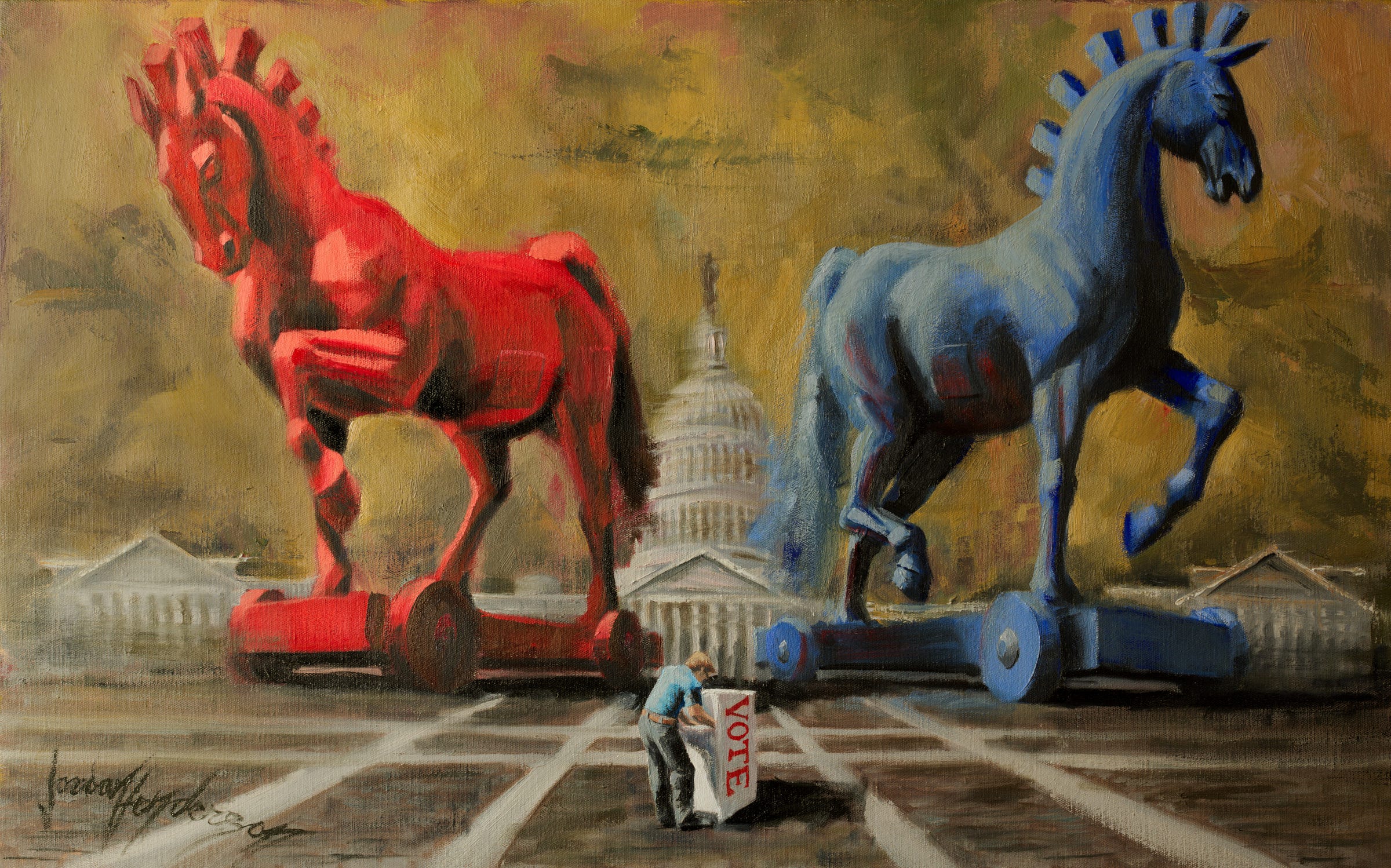
One of the political lessons I learned in Washington was “when you see a parade going by, get out in front and pretend you're leading it.” - Robert Underwood
There are some people in the Dissident Left who reflexively push back against whatever Trump, and Musk advocate. Their reasoning seems to be that because Team Trump is a Technocratic Trojan horse (true), then whatever they advocate is bad. That’s too simplistic of reasoning. Just because Team Trump is the latest Technocratic threat (and a very serious one it looks to be), doesn’t mean it is reasonable to oppose something for no better reason than that Musk endorsed it.
C. J. Hopkins is an example of what I’m talking about.
I like C. J. Hopkins, I do, and I admire him for his legal fight against the German authorities. His attacks on Musk and Trump? - Excellent, many of the points he makes, and views he shares are good, like this one and this one.
But Hopkins’ reasoning on some issues today seems to have devolved into thinking that if Musk says something is an issue then it’s not an issue. If Musk believes that something is right, then it’s wrong.
Because Musk has called attention to Pakistani rape gangs C. J. Hopkins ridicules those who think that Pakistani rape gangs are a serious issue. Because Musk is leaning into some sort of Germany for the Germans idea, Hopkins is opposed to it. Because Musk suggests that maybe Germany should abandon Holocaustianity, Hopkins thinks that that’s tantamount to Nazism.
If Musk said, “the sky is blue,” you can be sure that the next moment C. J. Hopkins would be ridiculing anyone who thought the sky was blue, and claiming that they are a brainwashed Musk cultist for thinking so.
I get it. It is right to be wary of ideas endorsed by the Silicon Valley + ZOG, swamp monster frontman Trump, and the military contractor, Thiel connected, Musk.
So what’s actually going on here?
Team Trump found a parade — an actual populist movement — got in front of it, and will no doubt try to steer it to their own ends. Actually Hopkins already knows this, he identified what’s going on, controlled opposition (emphasis mine):
“I have to tip my hat to Musk, and to the formerly secret consortium of global-capitalist behemoths that took over Twitter. They saw an opportunity, and they seized it. There we were, a multiplicitous mass of opposition to the New Normal Reich, righties, lefties, inbetweenies, people of every color and creed, united in defense of our democratic rights, pushing back against a weird new form of totalitarianism, and … well, that couldn’t be allowed to continue.
It was obvious what had to be done. As Vladimir Lenin famously noted, “the best way to control the opposition is to lead it ourselves.”
The movement, though, that Team Trump is trying to takeover is real. And the movement has a mind of its own to at least some degree.
An example of this can be seen with the Indian immigration debacle. Musk defacto advocated further undercutting American labor, on behalf of big business. That’s the kind of thing Team Trump wants to do. But it backfired spectacularly, demonstrating that Team Trump clearly is not in the driver’s seat, not securely anyways, not yet. They wanted to steer the movement that way, they failed, and lost credibility.
So then Musk makes a big show of supporting the anti-immigration AdF in Germany. How much more obvious could he get? Musk let the mask slip with the Indian immigration debacle, so he was trying to rebuild political capital. That doesn’t mean that Germany abandoning Holocaustianity is anything other than a good idea, just because Musk supports it.
It simply means that Team Trump is struggling to rebuild political capital, and endorsing popular causes in an attempt to regain that capital. They haven’t yet actually taken complete control of the parade.
So we don’t need to reflexively oppose something just because members of Team Trump endorse it. They are of course going to endorse some good ideas if they want to maintain the appearance of being the leaders of the populist movement.
Now the danger is that they (Team Trump) might actually take control of the populist movement and steer it to their own ends. They’ve done it before, so it’s a credible threat. Sadly actually, it is a probable outcome. That’s no doubt what they’re betting on, though the Indian immigration debacle shows that they’re having a harder time this time around.
So what are Team Trump’s real motives? So far these seem likely.
Technocracy: they will try to steer the populist movement into supporting Technocratic Corporatocracy through Dissident Right/Curtis Yarvin type ideas.
They clearly wanted to do a bait and switch of making people happy that they clamped down on illegal immigration while continuing to undermine American labor with legal immigration. Though again, the populist movement is watching them more closely this time, so they’re going to have a hard time pulling that off without losing political capital.
Sparing Americans no expense to serve Israel, of course. They might have big plans of a wider war or something in the Middle East, on behalf of Israel. They’ll need a lot of political capital if they want popular support for that.
Corporate welfare, you know 500 billion dollars to tech companies for AI junk, or bailing out bitcoin billionaires, and various other transfers of tax payer dollars to big business.
Organized Jewish interests may have finally figured out that undercutting the white culturally Christian majority has been an immensely foolish strategy. The new minorities cannot be as easily guilt tripped as the white majority, and consequently Jews are fast losing their spot at the top of the oppression points pyramid. That may be a big part of why we’re seeing some rollback of woke.
Probably a little of all five reasons. So yes, I welcome the verbal attacks on Trump, Musk, Thiel, and co. That cabal in the white house is ominous. Trust them none. But we shouldn’t just reflexively oppose something because they endorsed it; they’re going to endorse some good ideas and important causes - the cuckoo bird must fool the host.
A good read on Trump 2.0 is Neo Feudal review’s Fool’s Gold: How Trump’s Populist Return Is a Trap for the Naive.
Mathew Maavak’s perspective that the Oligarchy may be switching back to nationalism for the time being is worth checking out too, and he has a good list of the taxpayer funded corporate welfare that Musk’s companies receive. (I think it’s pretty clear that Trump, Musk, and company are internationalist/ globalist oligarchs, not nationalists, but it’s equally clear that they are riding and redirecting nationalist sentiment as an energy source for their cabal.)
And Catherine Austin Fitts’ takes on the crypto angle are especially interesting.
This, by the way, is the Traditional Oppression Point Pyramid (brought to my attention by a Neo-Feudal Review article).
Times are changing fast. This pyramid no longer holds up on the Left. The other minorities weren’t just going to leave the top spot uncontested, and many of the other minorities now just see Jews as white oppressors, and have cast them to the bottom in their updated versions of the oppression point pyramid.
This pyramid now only holds true for republicans, old school liberals, and most Christians. So this might result in a shift of the policies of organized Jewish interest groups, but maybe not anytime soon; there’s so much built up momentum in the push against the white culturally Christian majority, I think they might have a hard time applying the breaks now.
I mentioned cuckoo birds, in conjunction with Trump, in the subheading. common cuckoos are nest parasites. They lay their eggs in other bird’s nests. Their egg hatches first, and then their little chick pushes the other eggs out of the nest. The parasitized birds, whose own young were pushed out of the nest by the cuckoo, think that the cuckoo is their chick and feed it. It demands more and more food. Sometimes the cuckoo is way bigger then the birds whose offspring it killed and they still don’t get it, they keep feeding the insatiable cuckoo chick.

Well, that’s what Trump and company were last time round, and they will no doubt try to be this time. They dominate the populist movement, try to fuel up on it, gain energy from it, make the populists think that they’re one of them, redirect their energy.
Back in 2020, in a symbolic artwork, I painted a presidential seal in the background, with a common cuckoo in place of an eagle, and spotted cuckoo eggs instead of clouds. I also put cuckoo clocks above the seal on the right and the left of the seal. With the hands of the clock above the cuckoo’s right wing (bird’s right, not the viewers) pointing at the four and the five, for 45. If you wondered what that part of the symbolism in the painting was about now you know.
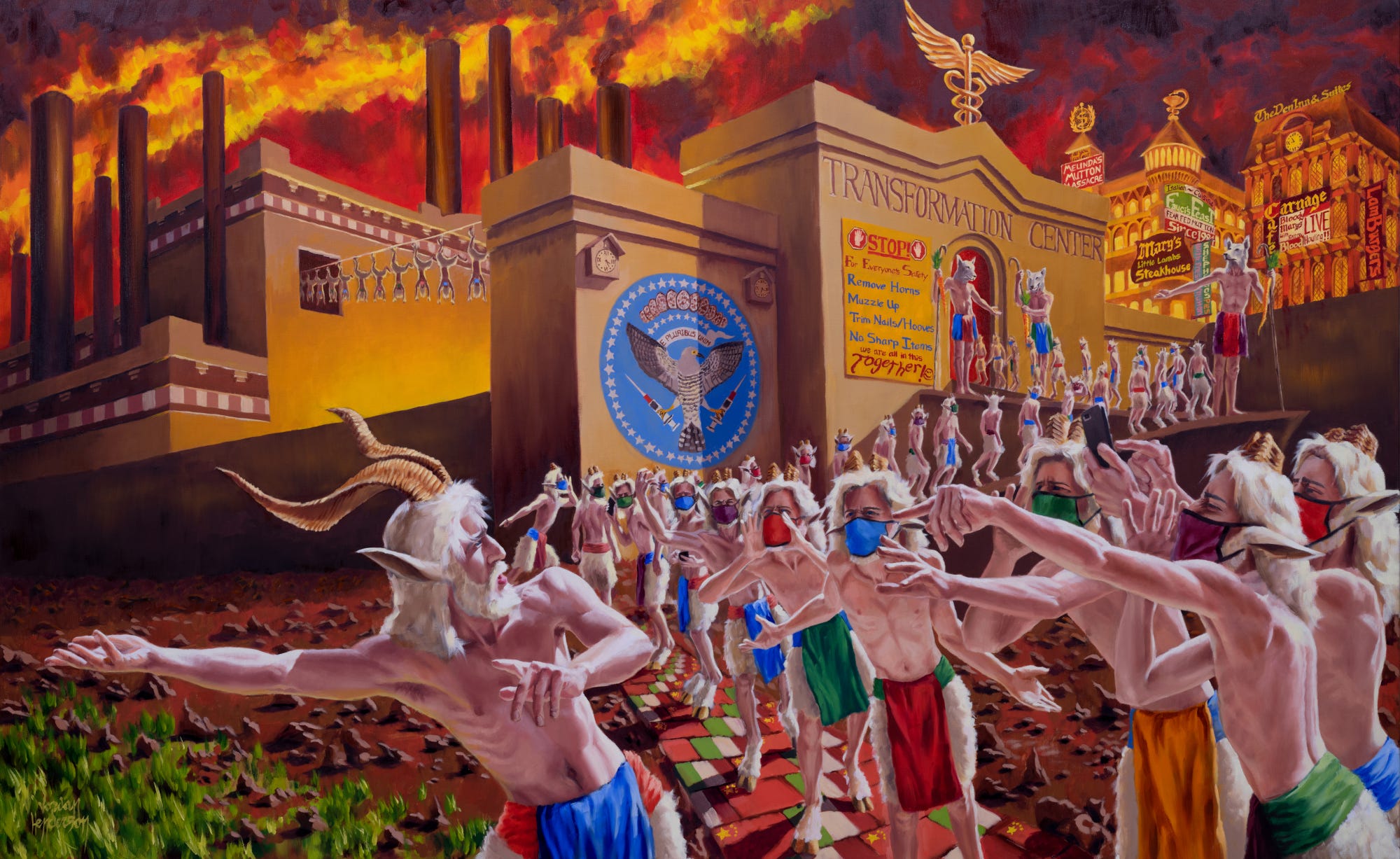
The Root Cause Cop Out
Those who do not want whites in the dissident Left, trying to set the record straight on racial matters, will insist that you must set any concern for pushing back against anti-white narratives to the side, and instead address bigger problems. Shoniwa writes:
“Tackling some of the causes of immigration is a thorny subject for me because I don’t believe you get to consent to your government actively supporting foreign wars while also rejecting the blowback consequence of migration from the war zones. I recognise that we are not given a choice when our so-called democracies enthusiastically sponsor armed conflict abroad but, as I argue in the next section, that is the ultimate problem we need to focus on. We don’t have democracy in any meaningful way, and if an alleged Great Replacement turns out to be a valid problem, it won’t get solved until we resolve the primary cause – an utterly broken system that offers no meaningful avenues for people making all the choices and not politicians.”
Note the unjustified assumption that we have consented to foreign wars, then the admission that we’re not given a choice anyways.
C. J. Hopkins writes in a comment:
“No, the actual issue is the systematic dissolution of national sovereignty and borders, which is being carried out by the global-capitalist empire that we all live under, i.e., globalization. Fomenting racial hatred isn’t going to stop that process. I realize neo-nationalists are giddy at the moment, but, if they think they’re actually going to ethnically cleanse their countries, they’re dreaming.”
Neither Shoniwa nor Hopkins actually believe what they’re recommending here; they both directly attacked the Covid narrative as well they should have. They identified root causes of the Covidianism but they also addressed specific details (like the vaccines, and facemask rituals). They didn’t insist that we set aside opposition to Covid until we had brought down the oligarchy, or Globo Cap first, they rightly saw direct opposition to Covid as direct opposition to the oligarchy/Globo Cap. But for some reason they can’t see that on immigration and anti-white majority agendas.
Let me illustrate the unreasonableness of believing that you must root out the global oligarchy before you can work on specific issue like culturally inculcated anti-white beliefs.
Imagine that you live in a cabin in the woods and are faced with a forest fire creeping towards your cabin. You immediately sound the alarm.
“Common! Let’s get clearing brush, cutting a fire line, and making sure the cabin doesn’t burn down.”
Some onlookers, named Shawn, and J. C. Thomkin (no relation to real persons living or dead) berate you,
“What are you doing! The fire burning towards your cabin is not the root cause! Poor forestry management is the root cause, stop worrying about the fire, you must focus on forestry management.”
Poor forestry management may well be the root cause. The forest may need thinning, grazing, and controlled burns. That’s not going to save your cabin though. Save your cabin first, then focus on forestry management. Otherwise you won’t be focusing on forestry management anyways, you’ll be rebuilding your cabin.
Assailing Criminocracy from all Sides
The West is waking up on some matters, the divide and conquer tactic of mass immigration, and multiculturalism is seen for what it is by more and more people. Why not encourage this waking?
Why not use opposition to mass immigration, and cultural and demographic replacement, as a basis for uniting against Globo Cap, or the Criminocracy?
Opposition to cultural and demographic replacement is opposition to top down social engineering. Why not rally around this banner?
So here we dissidents are attacking the Oligarchy’s stronghold. Sometimes we hit upon some strong stuff that does some real damage (reinvestigating germ theory, 9/11 Truth, AIDS Truth).
But in other areas, involving the atomization of our societies, we haven’t been doing much damage to Oligarchy Inc. We’ve basically been throwing sticks at its walls, lobbing water balloons against the towers, plastering the gates with paint ball guns; nothing seems to do the trick.
But then some of the dissidents wheel up a big bronze canon, a cartload of iron cannon balls, and barrels of powder. Written on the side of the cannon is Opposition to Cultural and Demographic Replacement.
Oh ho ho, explosive, let’s see what that bad boy can do to the walls of the Globo Cap fortress.
But no sooner is it loaded and pointed at the walls, when our good friends Shawn, and J. C. Thomkin (again, any resemblance to persons living or dead, is purely coincidental) berate us,
“What are you doing pointing that Opposition to Cultural and Demographic Replacement canon at Globo Cap?! Don’t you realize that Globo Cap is the root cause, not immigration?!”
If you want to bring down the Criminocracy why not assail it from all sides? Exploit its weaknesses. Assail it for it’s callous bloodshed and destruction from the anti-war side. Assail it for its trade agreements that undercut peasant agriculturalists, and industrial workers from the protectionist side. And assail it for its divide and conquer methods from the Opposition to Cultural and Demographic Replacement side.
Ah, but what if some of the supposed coalition of the 99% find that actually globalism is working just fine for them? What if many Muslims rather like having most of Europe open to them, want to see more of their compatriots in Europe, and see globalism as working for them on behalf of spreading Islam? Africa’s population is booming, what if many of their nations see globalism as the easiest way to provide an outlet for more population pressure than they can handle by moving overseas into other countries? What if Hindu nationalists value globalism as a release valve for demographic pressure too, and an opportunity to have a powerful diaspora working on India’s behalf abroad?
“They (Indian diaspora) can be India’s voice even while being loyal citizens in those countries. That is the long term goal behind the diaspora diplomacy. It is like the way the Jewish community looks out for Israel’s interests in the United States”
I think the hang up for Q-Anarchists is that they don’t want to lose the illusion of a coalition of the 99%. You oppose some globalist policies and you can maintain that illusion. You oppose other globalist policies and then, ooh, the fractures appear and the real conflicts of interest between groups show up.
But if bringing down the Criminocracy is more important to us then maintaining the illusion of a coalition of the 99%, then let’s open up the front on the Opposition to Cultural and Demographic Replacement side of things.
Q-Anarchism
Q-Anon was the phenomena where Trump supporters were led to believe (by an anonymous account, that supposedly was in the know) that Trump was really working on their behalf, even though a plurality of evidence pointed to the contrary. They were told to keep trusting the plan. The effect was people continuing to give their support to, and pin their hopes on, Trump, long after the evidence available to them should have encouraged them to rethink, and find another vehicle for their interests other than Trump. (So the Trump supporters were like poor little read warblers stuffing food into the gaping maw of a giant cuckoo chick, long after they should have been suspicious about what this thing was that they were actually feeding)
Q-Anarchism is the Leftwing version of Q-Anon.
Let’s return a moment to what I said early on in this essay:
“Here I am going to propose that those who have strongly objected to; my writing, Simon Elmer’s writing, and to Nevermore for publishing our work, sense at some level, what I know — the hoped for diverse coalition of the various groups making up the 99%, or proletariat, is largely an illusion, and a simple stress test of a mild sort will prove it. They want to avoid the stress test for the same reason I want to apply it. We both suspect the same result if the coalition is subjected to a mild stress test — it will shatter because it was a mirage all along.”
So what’s the simple stress test? I’ll show you, look at this handy graphic that I lifted from Nemo Jones’ Natural Law Article:
Every people including white people need to be able to practice both sides of the right action chart, including the masculine side. Take no shit, set the record straight, push back against demonization of their group, and take the interests of their own demographic seriously too.
If white people standing up for themselves and having frank discussions about immigration, the dangers of ethnic conflict from multiculturalism, and so forth, is all it takes to tear apart the coalition, then there is no coalition, there’s just an abusive relationship.
The white majority in this relationship is the woman who thinks “they really have something going” and covers up for her abusive boyfriend/husband to maintain the illusion of a partnership. “No he didn’t hit me, I just fell down the stairs. No don’t confront him about it, you’re going to ruin what we’ve got going.”
The Stirrer, Rusere Shoniwa, and company direct more anger at Simon Elmer for calling attention to Pakistani rape gangs than they do at the Pakistani rape gangs, or at the UK authorities for covering it up.
They recognize that the divisions are so real, and serious, that merely acknowledging them will tear apart the appearance of a coalition. They know as well as I do that multiculturalism is divide and conquer, but are displeased with me for pointing it out. They feel they can somehow keep that reality at bay through pretense.
For my having brought up the skyrocketing crime from immigration in Sweden, Shoniwa accused me of having “sucker-punched immigrants as far as Sweden.” But what about the Swedes? Does the effect of immigrant crime on them matter? Should we not pay close attention to what lessons the Swedish example can teach us about the dangers of multiculturalism and mass immigration?
That’s what I mean, they know that the divisions beneath the surface are sufficiently serious that the slightest stirrings of discontent from the whites who are supposed to keep quiet will break the appearance of a coalition. The coalition can’t handle a simple test.
A real coalition, a true partnership, can handle open frank discussion.
So a question for Shoniwa, The Stirrer, and company - If you don’t want the white culturally Christian background majority to practice even the mildest form of purely defensive ethnic solidarity by speaking out and setting records straight, then what are you doing to prevent other groups from practicing ethnic, and religious solidarity? Or is it just the white culturally Christian majority that you don’t want doing that?
The Moment of Truth
The next step is simple. Welcome open frank discussion, encourage the white majority to take their own interests seriously too, and then see who is still willing and wanting to work with you.
The minorities that remain we can form a coalition with. Those who were put off by the white majority asserting the legitimacy of having their own interests too, were no real friends to begin with. The coalition still might not work in some cases because the minority’s ethnic interests and the local white majority’s might be completely at odds.
The best thing for a given minority’s ethnic interests may be to keep importing more of their compatriots. That might be a logical thing for them to do for their people.
That might be a terrible thing for the white majority in terms of housing costs, wages, crime, overburdening of social services, overcrowding of cities, and so forth.
There might be work arounds in some of these cases. For example: many Hispanics have a class interest in having very little immigration but an ethnic interest in continued immigration. It might be possible for them to fulfill both class solidarity and ethnic solidarity, by being against more immigration (class interest), but also against trade agreements that hurt the small scale farmer and lower classes back home with which they share ethnicity.
The Jury is in, The Plan Failed.
How long should we keep trusting the plan, and thinking that if only the white, culturally Christian background majority sets aside their own interests and practices activism on everyone else’s behalf, then we’ll all join together, push against the oligarchy and create a more just social order? Should we try the plan out for 10 years? Okay we’ll give it 20 years and then re-evaluate? How about half a century? Let’s add another decade for good measure and make it 60 years.
Well it’s been sixty years, and to this day people think that white flight from the 1960s and 70s is a sign of white bigotry and they still blame white people for getting driven out of areas. They still give us the differentials between black and white incarceration rates, and income, disingenuously omit the Asian stats, and people buy it as a sign of white racism against minorities.
Why wouldn’t they? Why would we expect people to focus on pushing back against the oligarchy if they think that whites, whiteness, and white supremacy is the real issue?
And how are we going to change that if we don’t set the record straight and push back against the anti-white narratives?
What other consequences have been caused by white Westerners renouncing any form of ethnic solidarity for themselves? Look at white Anglo Americans - they are atomized and their society is broken. They are so conditioned and propagandized that they recoil at the wrongthink concept of having any sense of kinship or solidarity with each other.
I’m not saying that everyone needs to switch gears and make this The Issue. This is just one of many issues, but it is a serious issue and we shouldn’t regard it as the one issue that we can’t have frank discussions about.
The Stirrer for example, looks like they’re are doing great work, in their community, and crafting thought provoking content. They feel they can bring people together and don’t want to break a fragile coalition. Excellent, they needn’t address this issue at all, but they also needn’t discourage discussion on the matter.
This issue isn’t going away, and there is important work to do in rolling back decades of anti-white propaganda. Again, if members of the white culturally Christian majority standing up for themselves and having frank discussions about immigration, the serious dangers of ethnic conflict from multiculturalism, and so forth, is all it takes to tear apart the coalition, then there is no coalition to begin with.
Sixty years the plan hasn’t worked and counting — Q-Anon almost looks reasonable compared to Q-Anarchism. Our analysis and discussion should accommodate the reality, of not just class conflicts of interest but ethnic and religious conflicts of interest too. Q-Anarchism glibly dismisses thousands of years of ethnic and religious conflicts on behalf of wishful thinking. That won’t do.
Postscript
My last essay received some great, thoughtful comments, and one comment, on the Nevermore posting of my essay especially stood out to me. So I’m going to end this essay with that comment, from Serial Misfit.
Let me start by saying that I'm Greek, so not technically white, at least not aryan, as we've never felt we belonged to any particular race other than our own, which is a mixture of pretty much all races. Greeks always vaccillated between the east and the west, settling for none. We were black to the Northern Europeans, and white to the Africans, easterners to the westerners and westerners to the easterners.
I'm also an immigrant in Australia, 25 years now, where for the first few years I was unintentionally illegal. I won't go into the details, but believe me, I know the dread of seeing a policeman in the distance, the exploitation, the sense of worthlessness, the despair.
I'm an anarchist, holding the traditional anarchist ideals, perpetually dreaming of a free, colour blind world, where everyone can realise their best potential, and move unobstructed.
Over the years, I have changed the way I look at immigration.
To begin with, I know first hand that migration creates a hole in one's soul that never gets filled. Nobody would choose to migrate from their homeland if they had a chance to live a good life there, save some pathological adventurers, and even they would most probably choose their homeland as a base.
So rather than support people's right to seek a better life elsewhere (my previous position), now I would rather support people's fight to fix their homelands instead, and live that better life among their families and friends, smelling the only fragrances, eating the only foods, and looking at the only landscapes and faces that can soothe their souls.
I went from living in a poor monocultural to a rich multicultural society, and though I find it very interesting and enjoy the challenge of understanding other people, I can still recognize that it doesn't help create cohesion and a supportive community, or to phrase it differently, it would take far more effort and many more generations to bring together racially and culturally diverse people into one unified community, than if they started from a point of cultural understanding and ethnic singularity.
It's a far lonelier world that of a multicultural society, and I'm pretty sure there's stats to show that.
I go back and forth to Greece whenever I can, and over the course of 25 years I've seen what mass immigration has done to the country, which under the guidance of the EU has become what they call a "depository of souls", most locked up in concentration camps, while the "lucky" ones outside either work for nothing, or have to resort to crime to survive, prey to the gangs of criminals that have also flooded the country, and to the Greek assholes who exploit their despair.
At the same time rich foreigners, "investors", and "developers" are displacing the local population who since the manufactured financial crisis of 2008 have become the second poorest in Europe. People are forced to sell, lose their homes to hedge funds, and a whole young generation faced with 45% unemployment has fled the country.
Greece is dead, and I'm crying as I write that, because I'm as territorial and tribal as the person next door, though I never thought I had it in me before I left.
Who has gained from all that? Certainly not the Greeks, neither the poor immigrants.
The second point I wanted to make, re white people being singularly attacked for crimes other races may have committed as well, is that this is the price you have to pay when your whole history is Eurocentric. The centre, becomes the bull's eye that all arrows will point at. There may be other worthy targets at the periphery, but everyone will aim at the glaring centre.
And last, a question that has bugged me all my life: is racism an instinct?
You see, I always had cats, and on some occasions they gave birth to litters of kittens who were all of the same colour but one. I observed how the kittens would play with each other but shun the odd one. There was nothing wrong with that kitten, it wasn't sickly or anything, it was just ginger or whatever. Was it coincidental? I don't know, haven't dug into it, but always made me wonder. Are we programmed to be hostile to the "other"?
To conclude, I remain convinced that a better world is possible, that dialogue and mutual compromise (stress on compromise) is the avenue, and that one can simultaneously hold two beliefs that seem contradictory at first glance, ie support people's right to seek a better life wherever they want, AND people's right to keep their ancestral lands and cultures intact.
I ultimately support people's right to choose, whatever that may be, provided nothing and nobody gets hurt in the process, whether I personally agree with their choice or not.



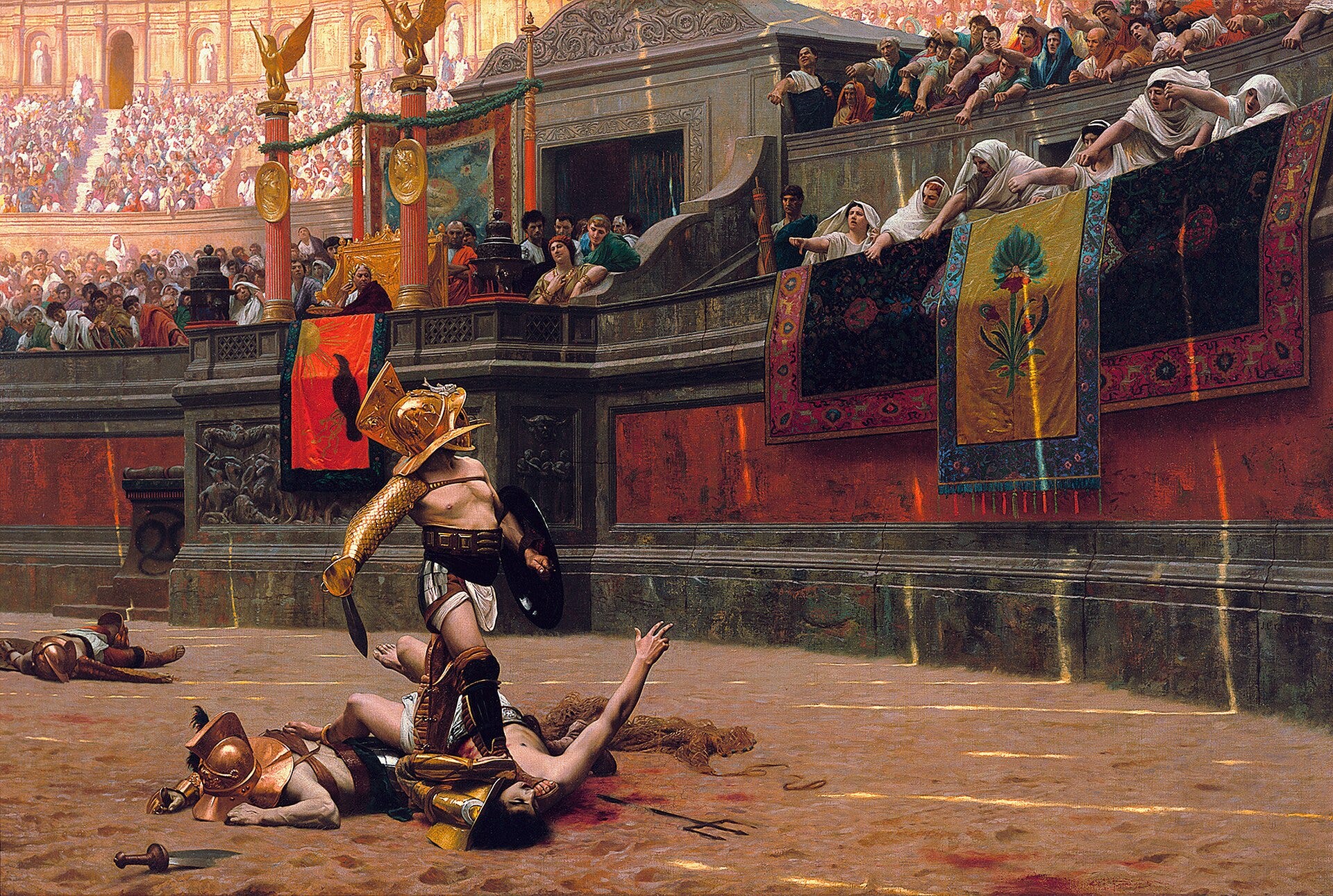
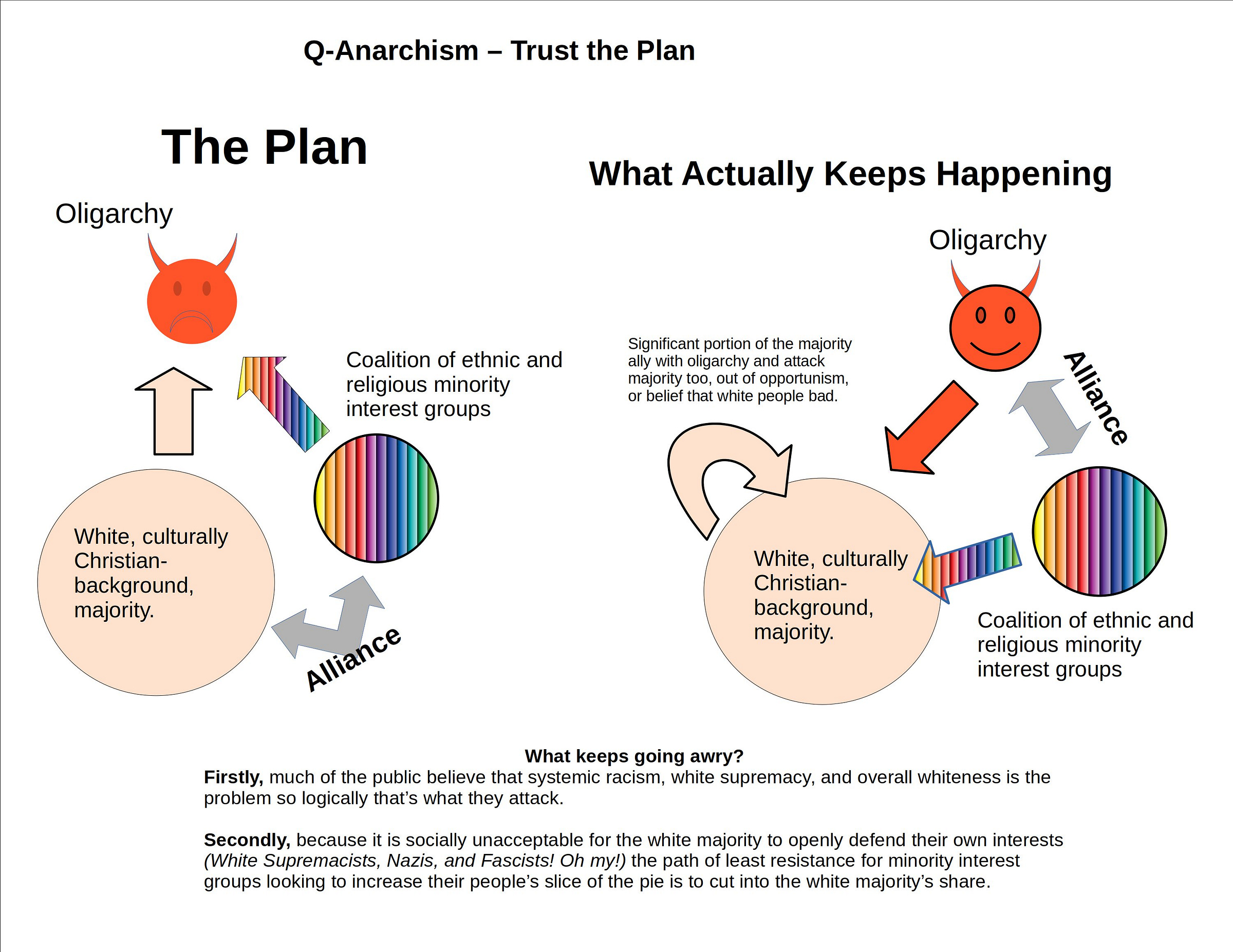
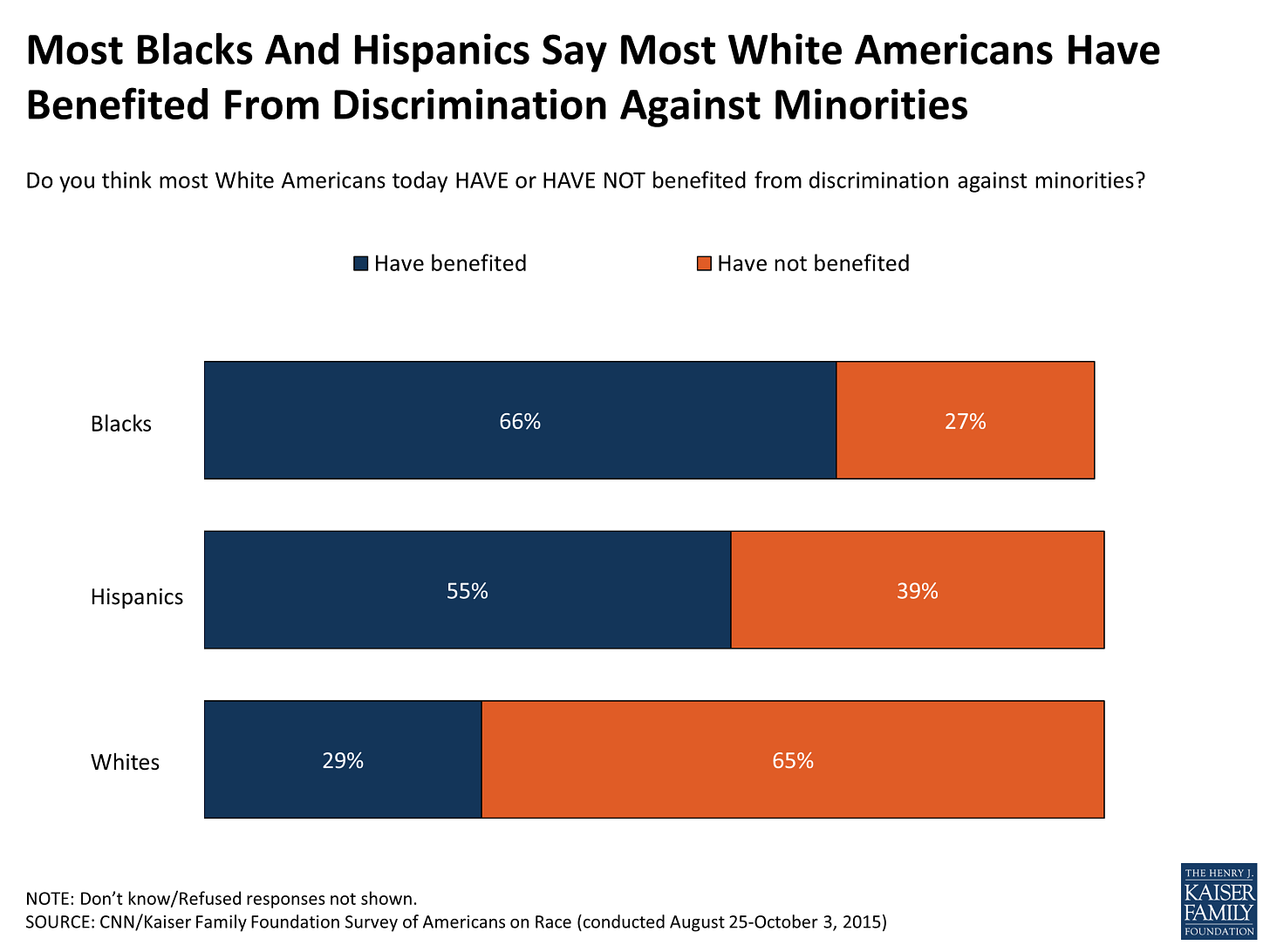
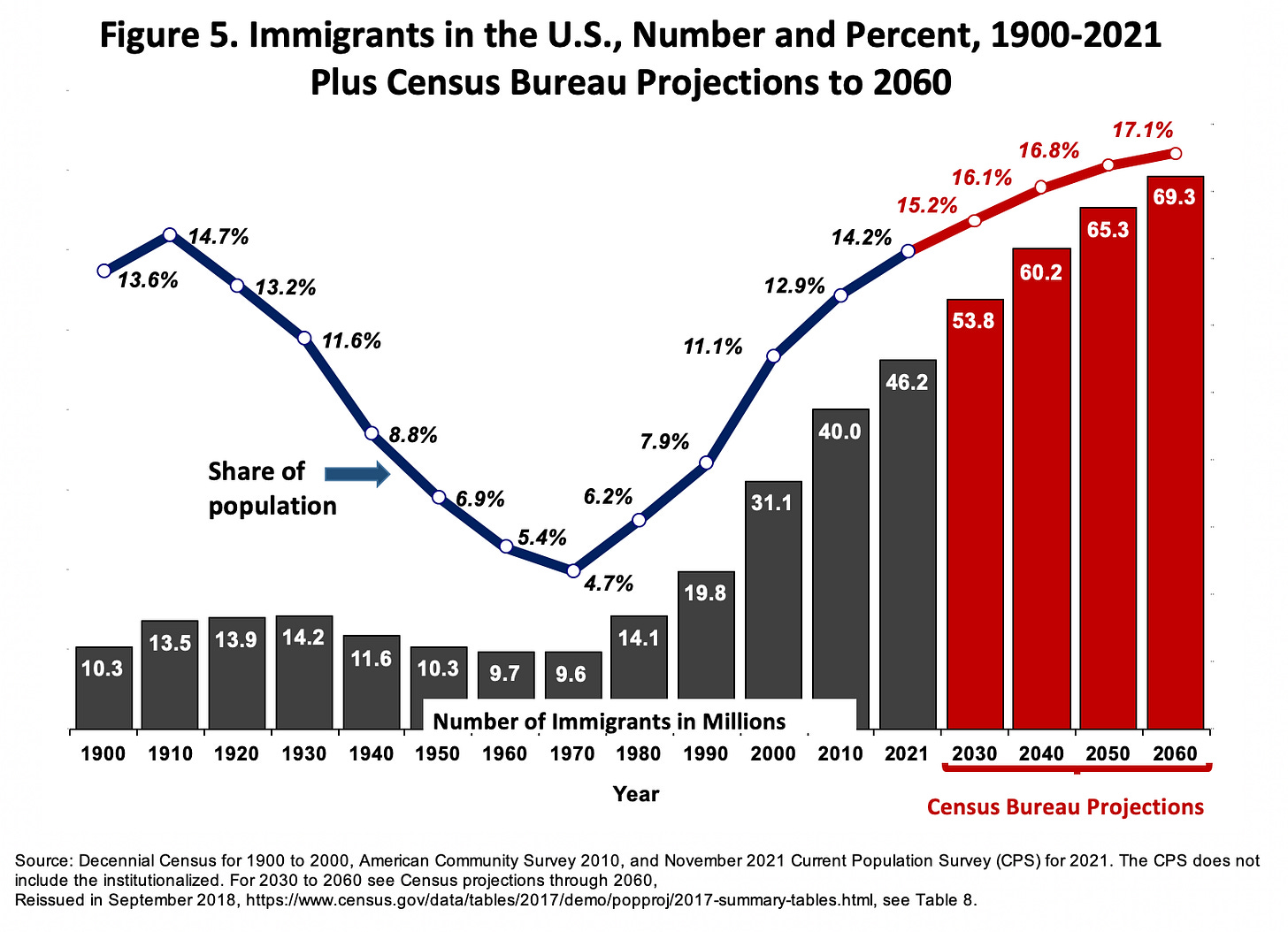

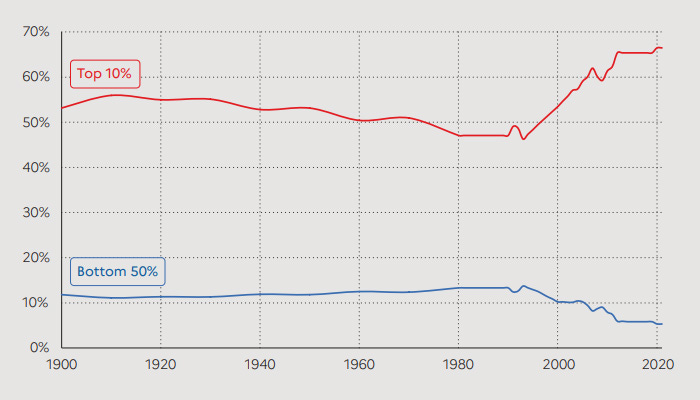
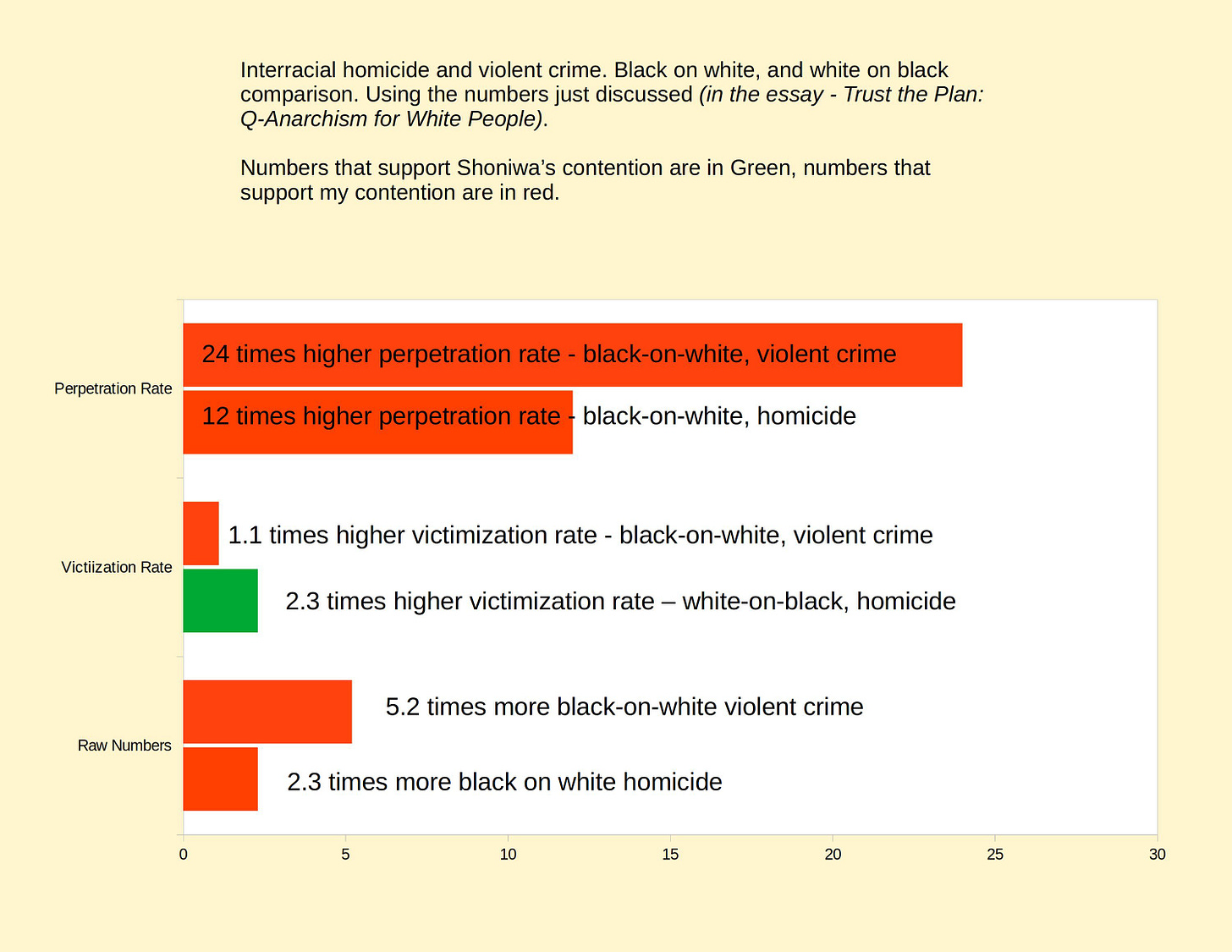
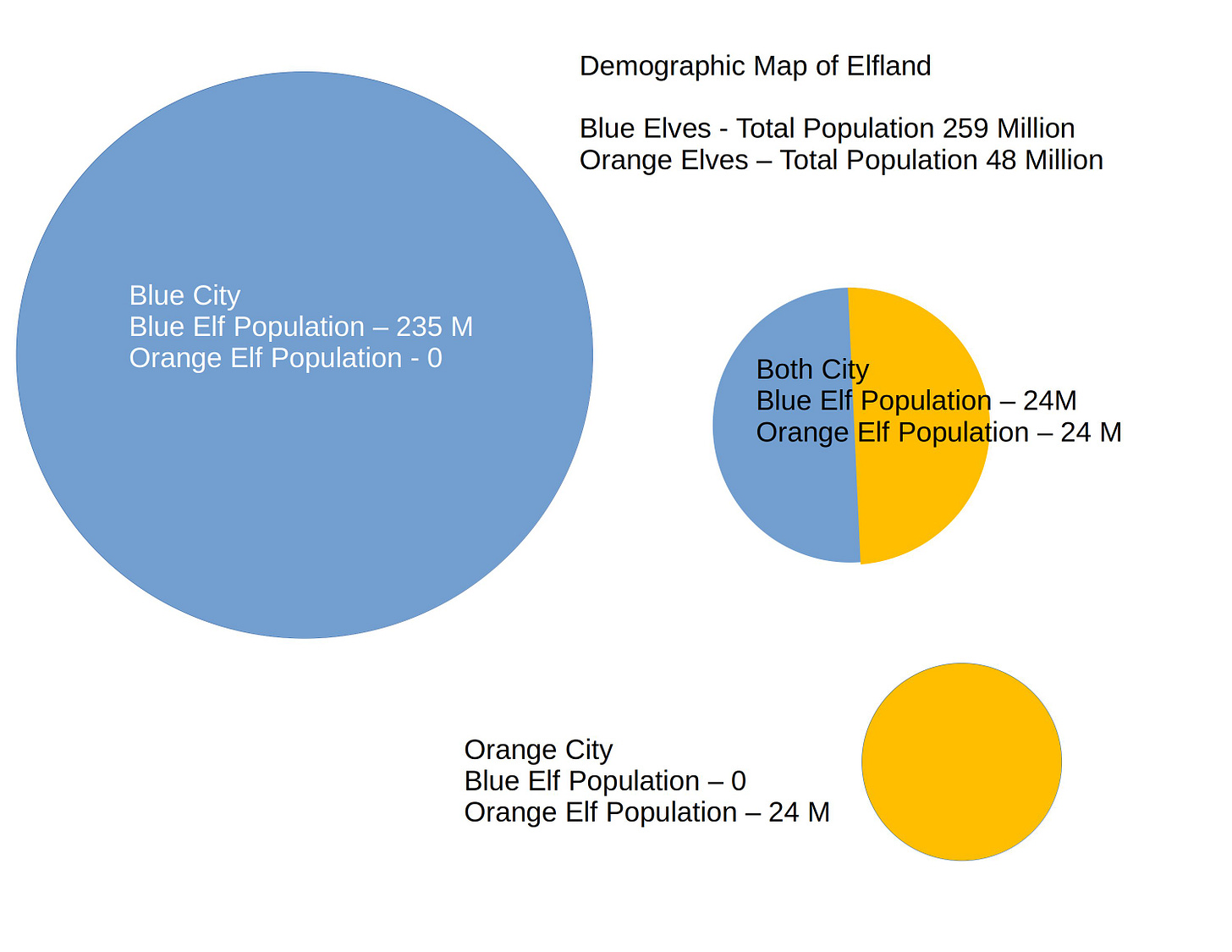


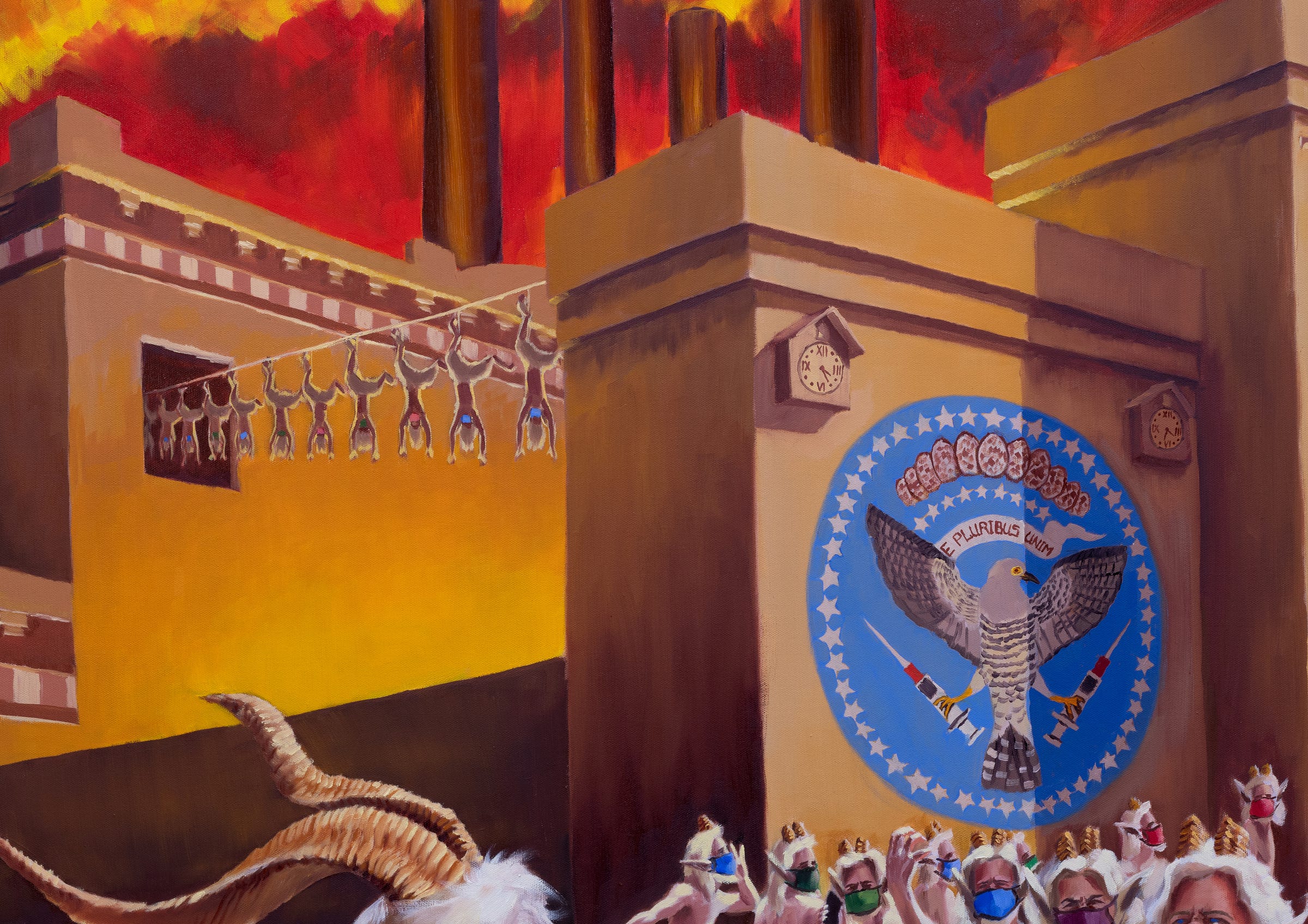

Epic post, but … TL;DR.
Just kidding! I did it ... I read the ENTIRE post! As a slow reader, daunted by length, I feel as though I should get some sort of ribbon or prize.
Seriously though, it was much appreciated, as were the preamble's amblings and the assorted gratuitous artwork. Even more appreciated, perhaps, was the refreshing level-headedness and, dare I say, respectful/ civil tone that you adopted. And God only knows, if everyone was more factual/thoughtful and less presumptuous/emotional, we'd surely be closer to the truth we all ostensibly seek.
Of particular note, many thanks for going the extra miles in thoroughly elucidating and fleshing out what I had suggested to Shoniwa was fallacious, owing to a blatant interpretive bias. Perhaps your elaboration will succeed (where I failed), in convincing him of the validity of my submission — which, ironically, as your further data-rooting revealed, was but the tip of an iceberg. Of even more particular note, with regards to 48 B interacting with 259 W, your “Map of Elfland” visual/graphic clearly illustrates what my words only hinted at (in admittedly vague and clumsy fashion).
Wow, Jordan, I applaud your effort to untangle the threads of this morass of issues and try to weave them back together in a coherent vision of a way forward. Here's one more angle to add that I don't think you mention, in your critique of some writers' shortsighted attempts to protect the illusion of a coalition. This angle would be less strategic and ideological, and rather personal and self-serving, if perhaps unconscious. Without naming names, I get the impression that some writers take positions that they hope represent cohorts of their readers, perhaps former ideological allies (especially on the "Left," or in the conventional "Anarchist" camp, as if there truly is such a thing, LOL!), or conversely, avoid taking what might be more consistent stances in order not to risk alienating segments of their readership. You, in contrast, seem to me firmly entrenched in the pursuit of truth and integrity, and let the fickle readership and commentariat flak fall where it may. Kudos for that!